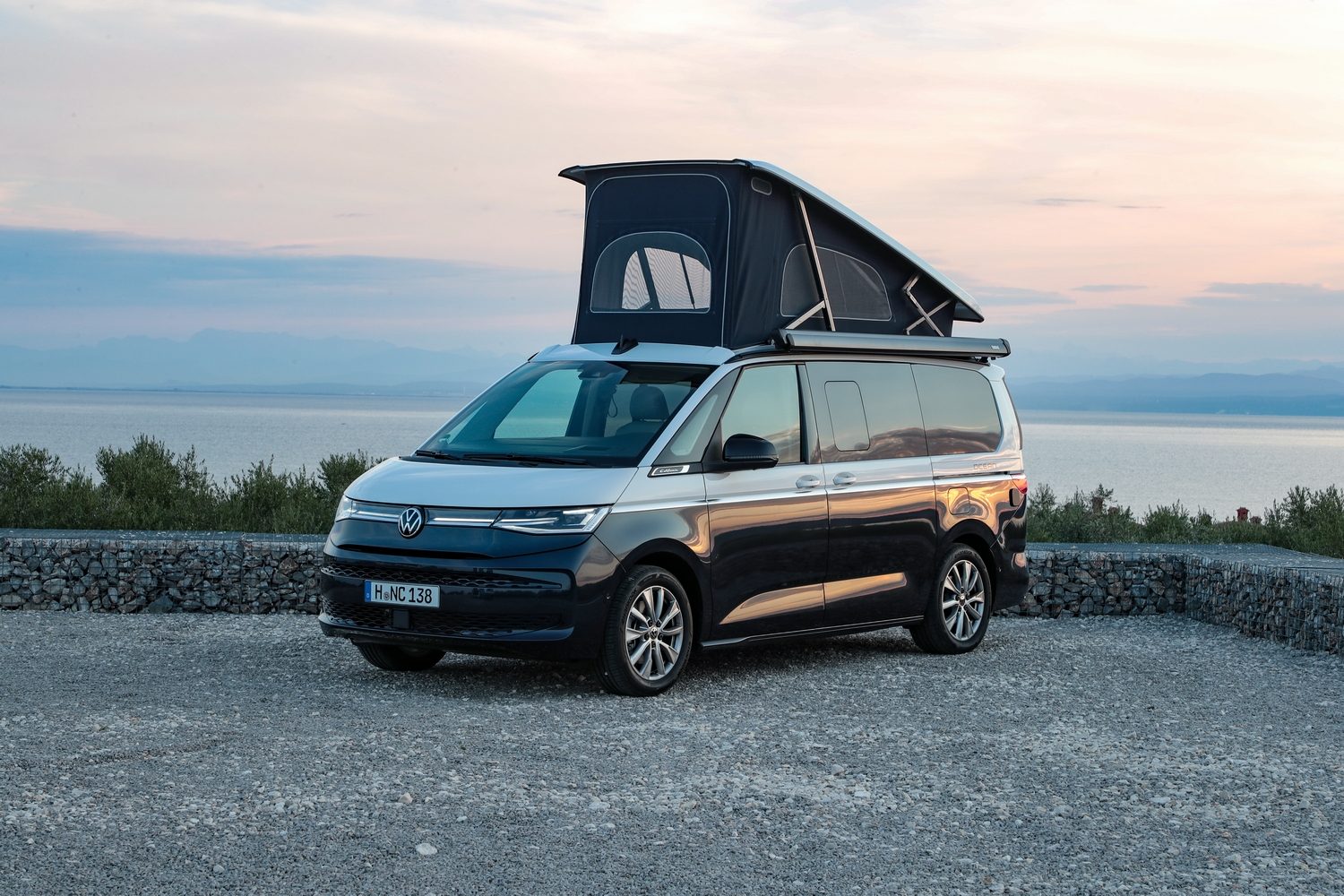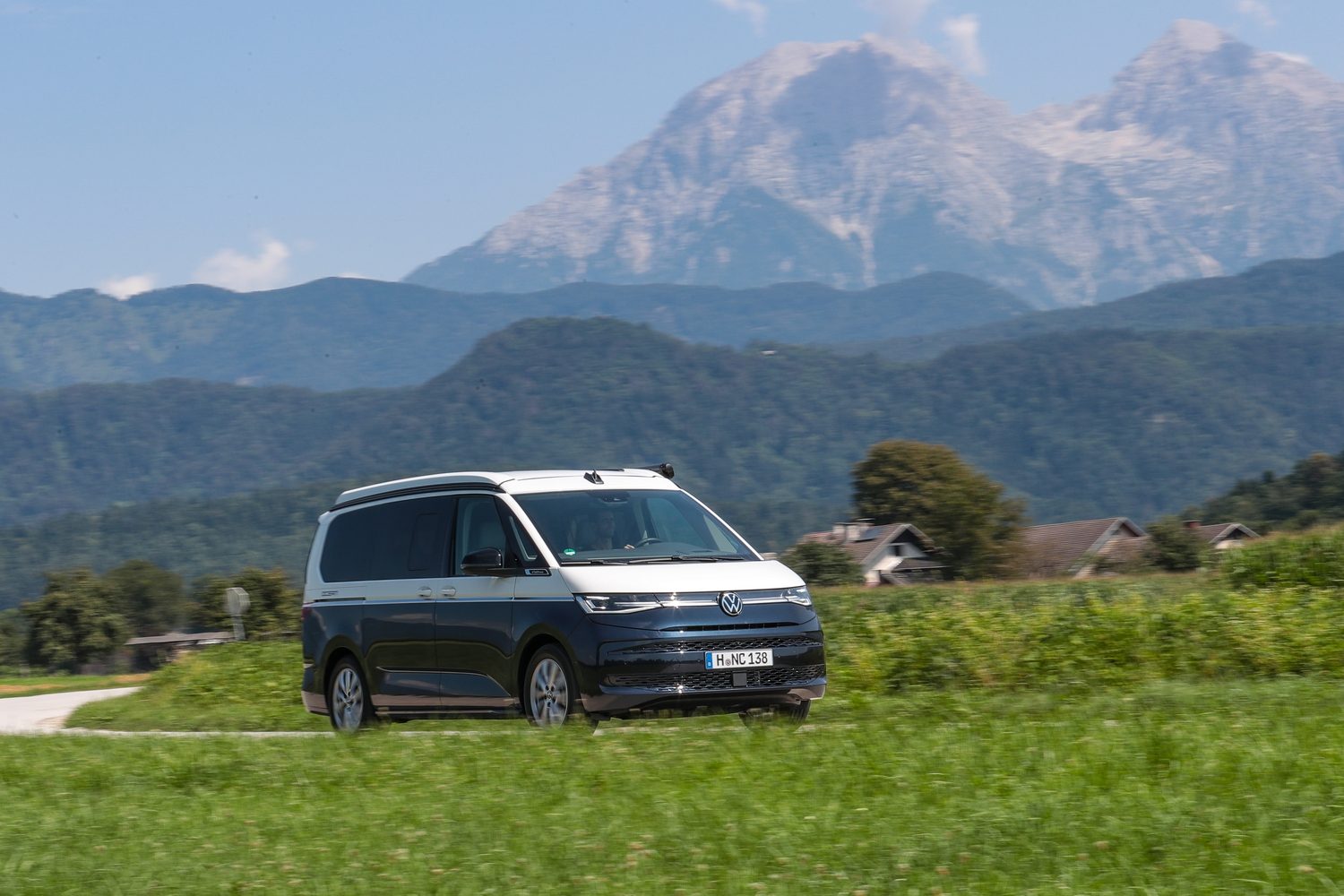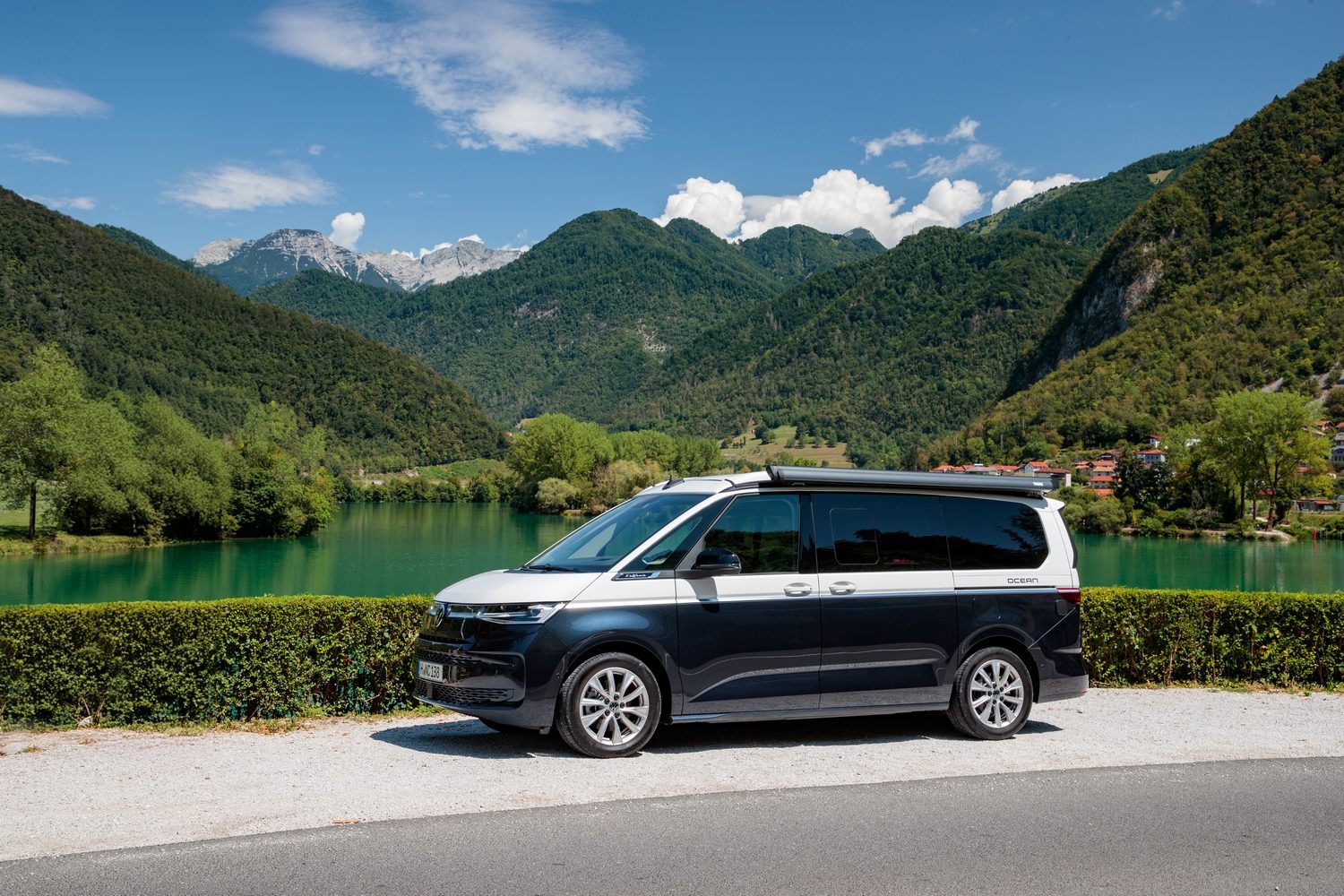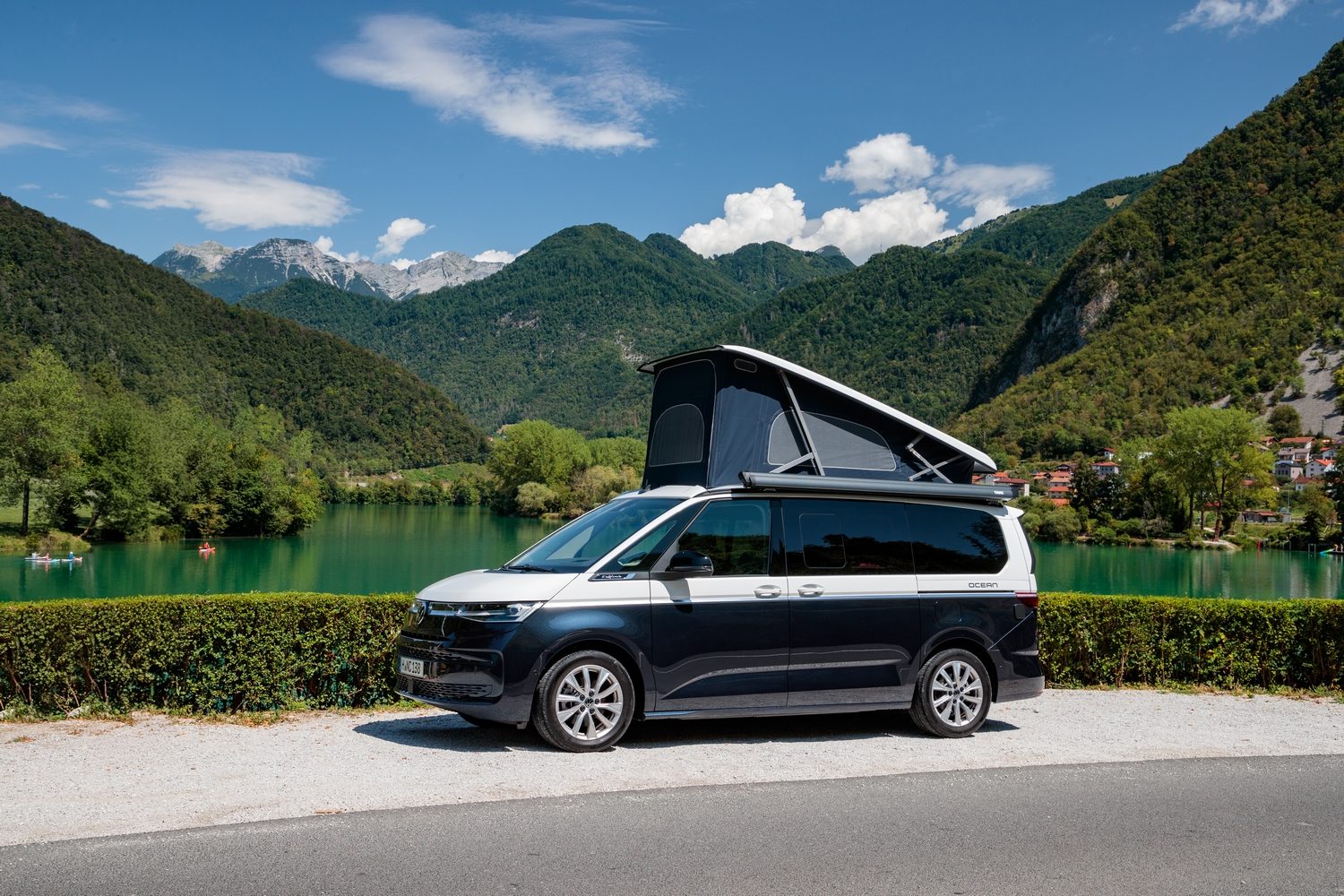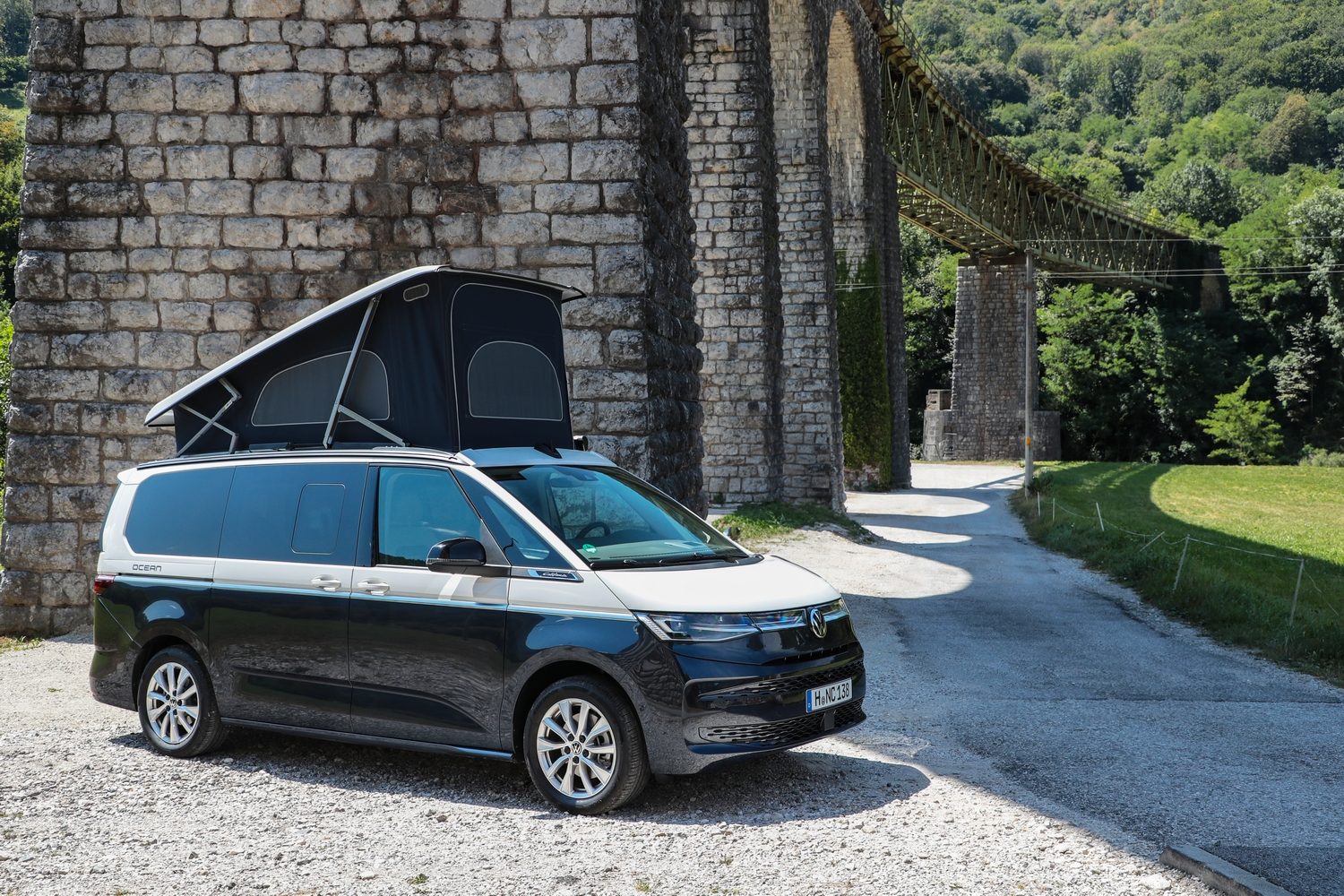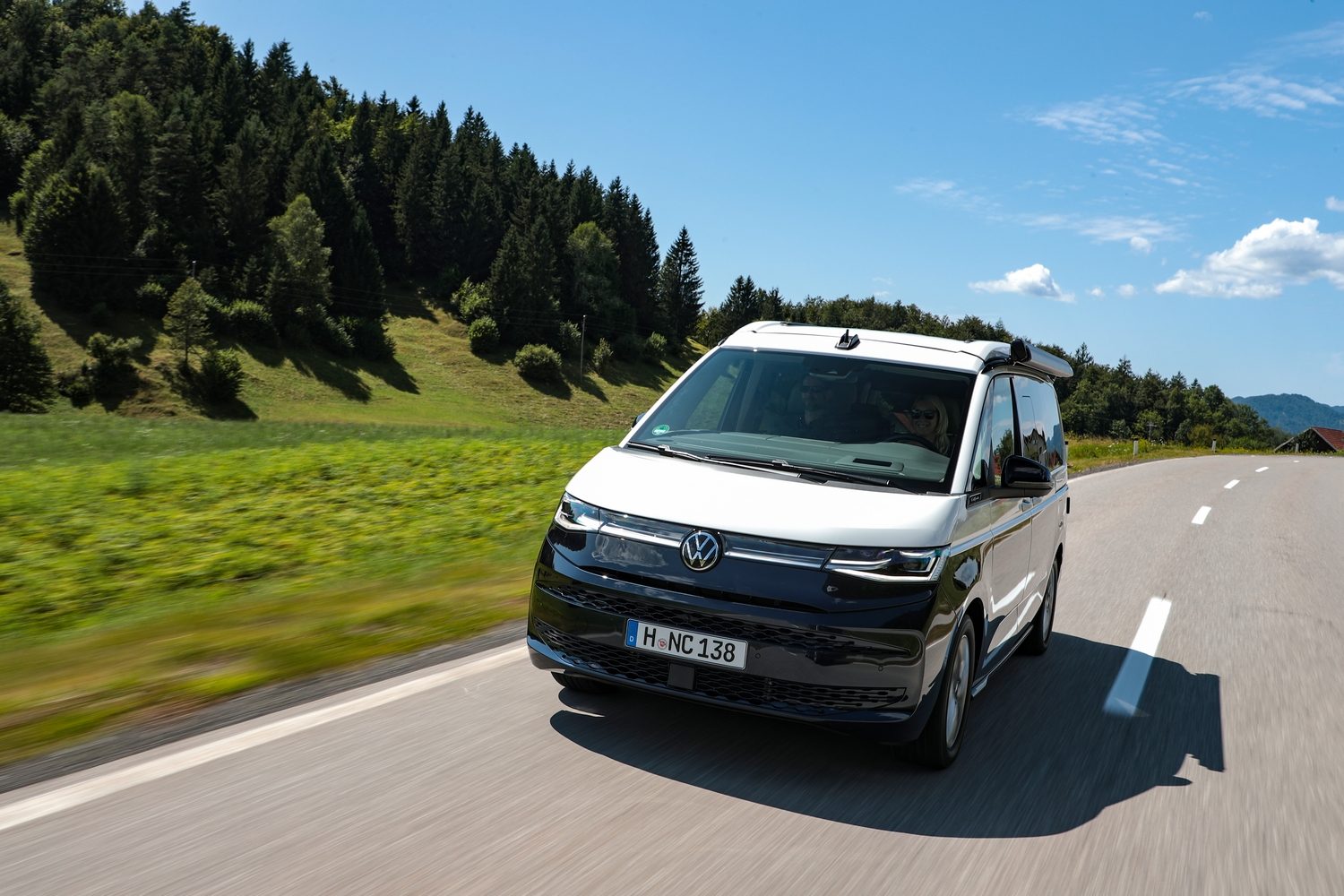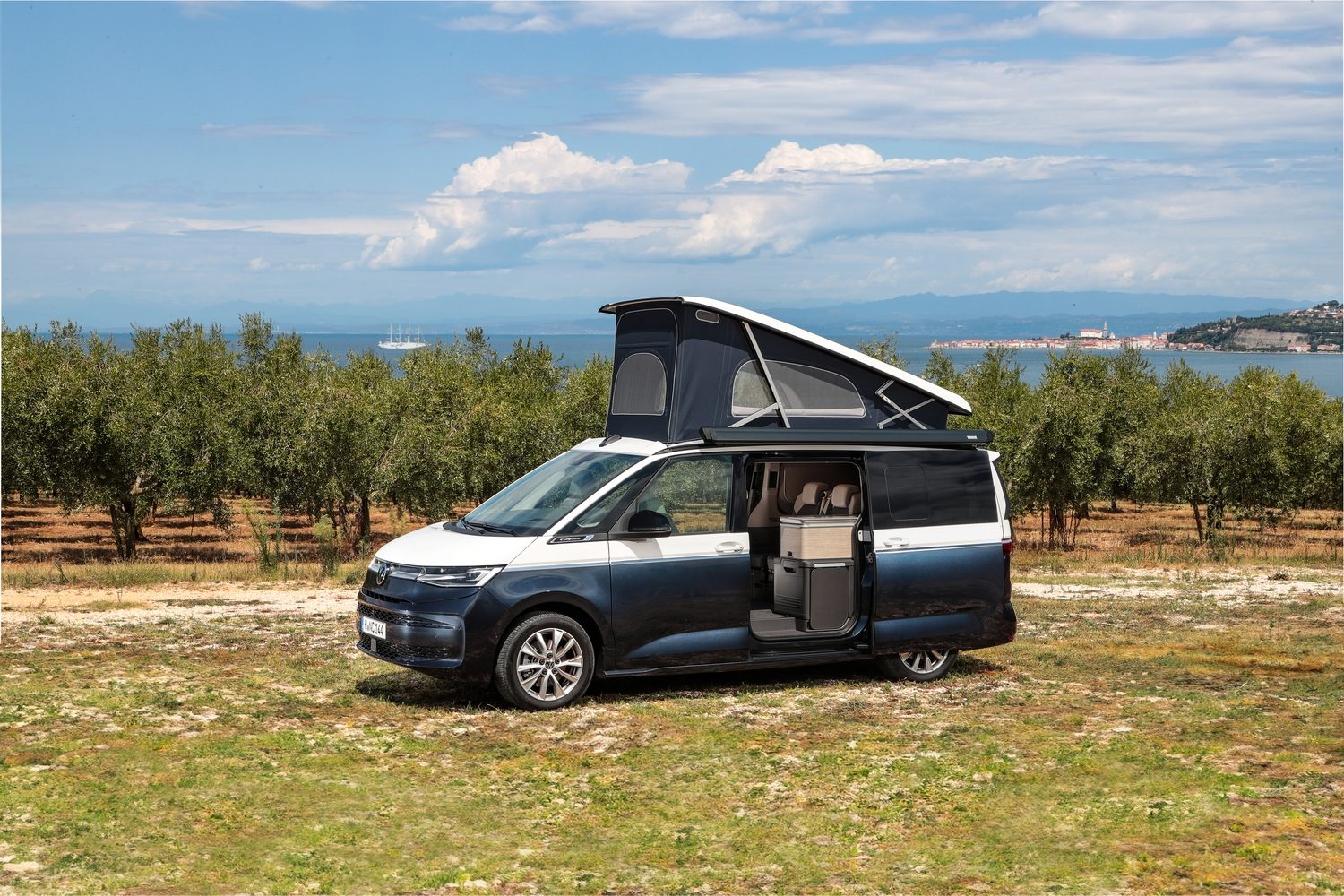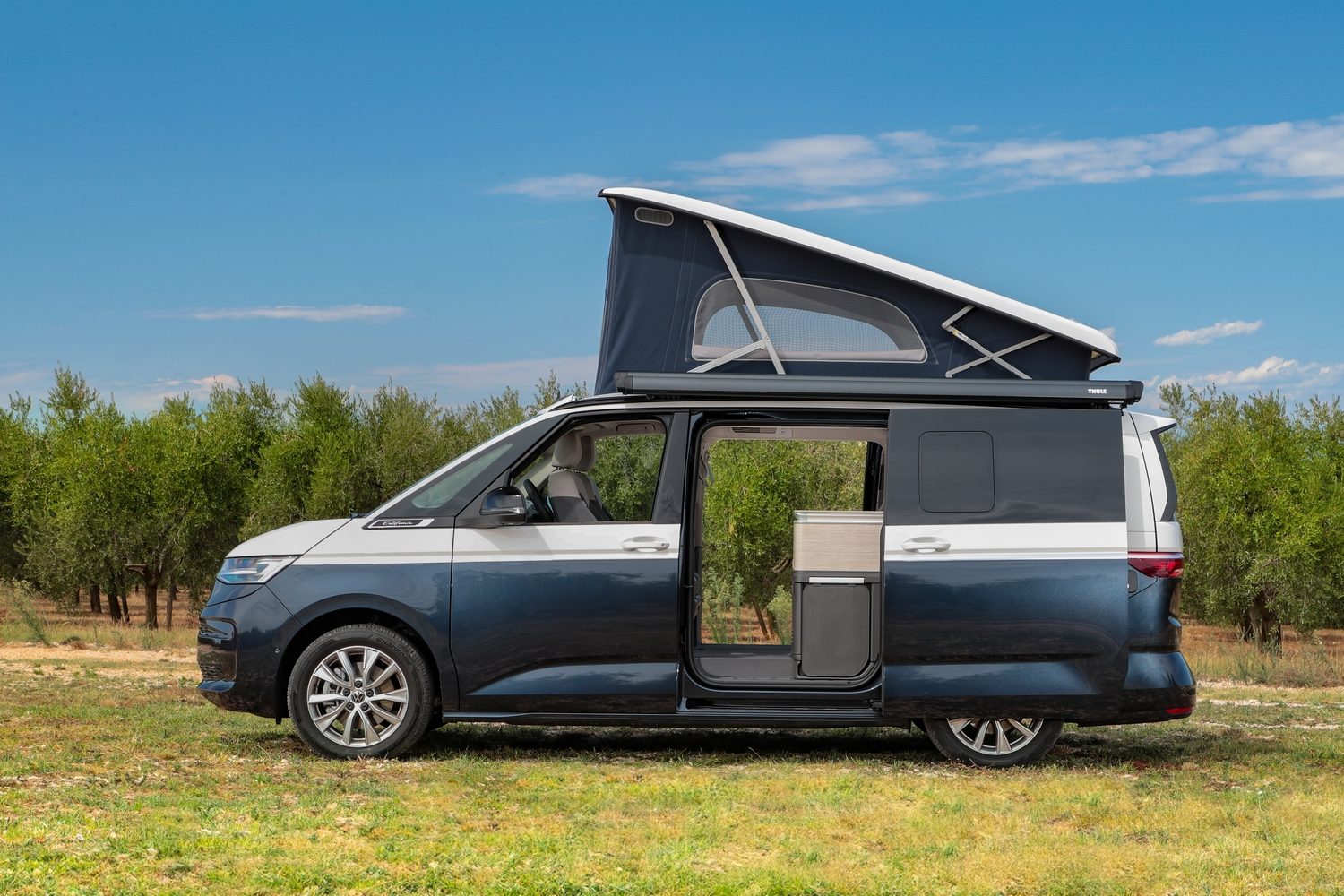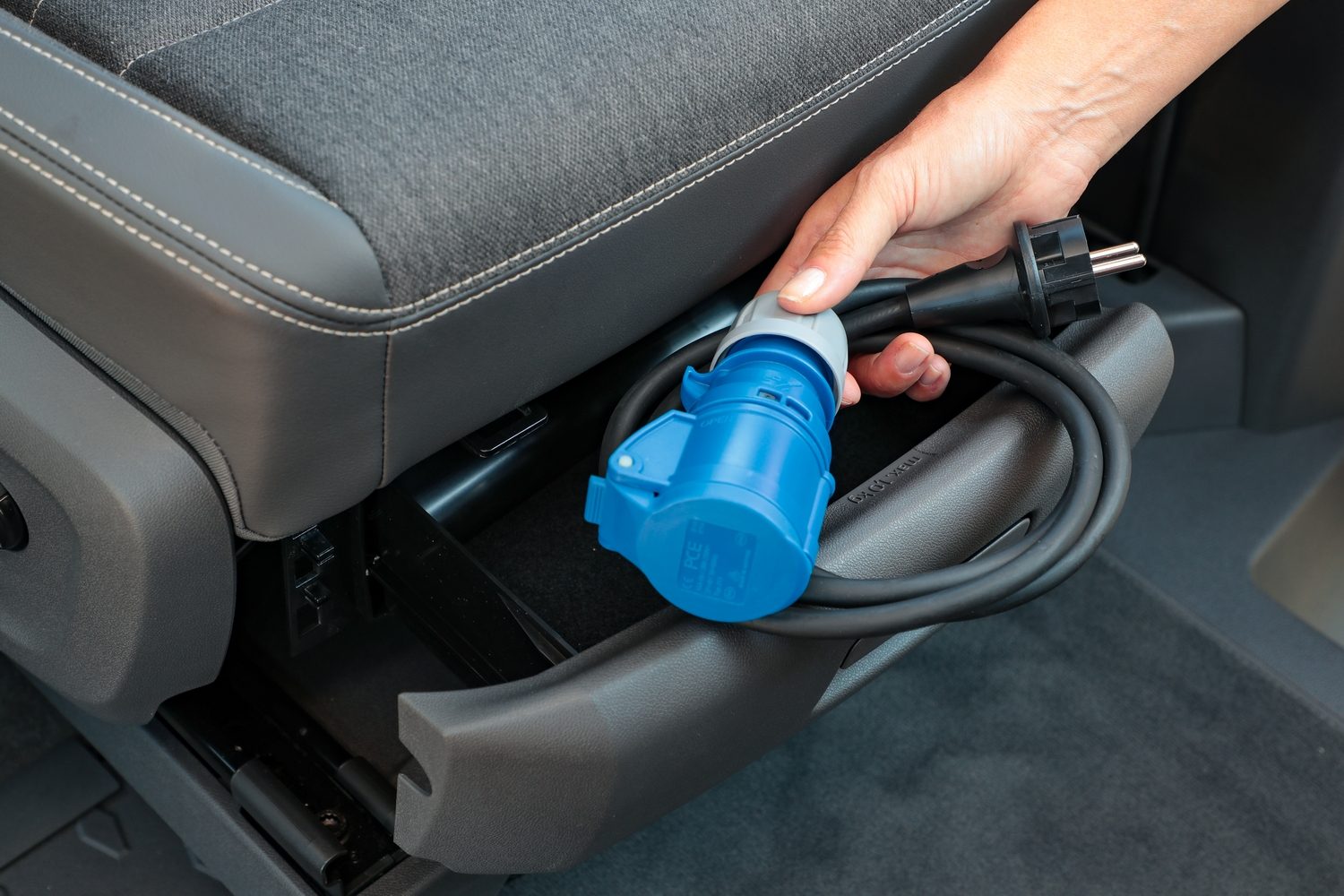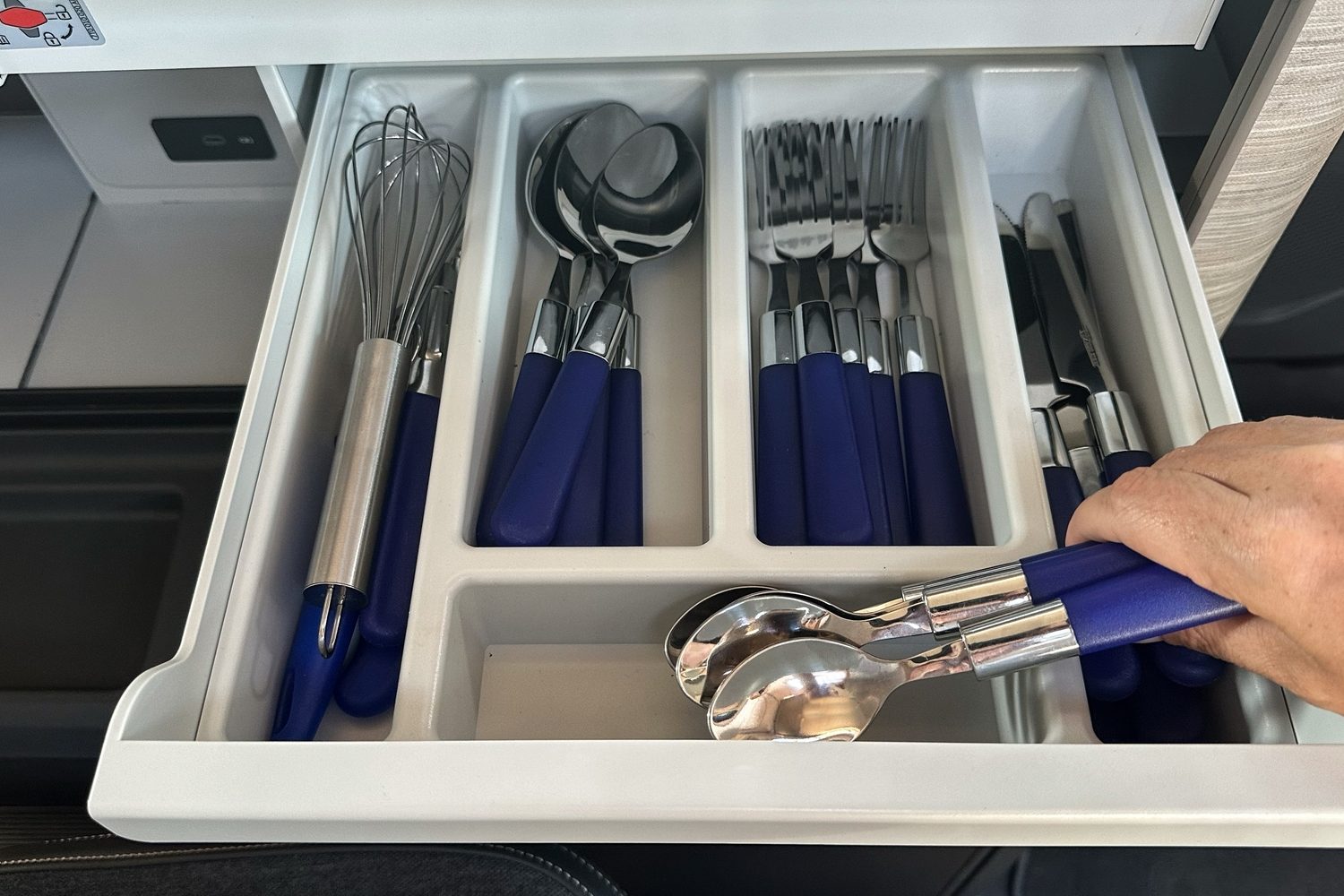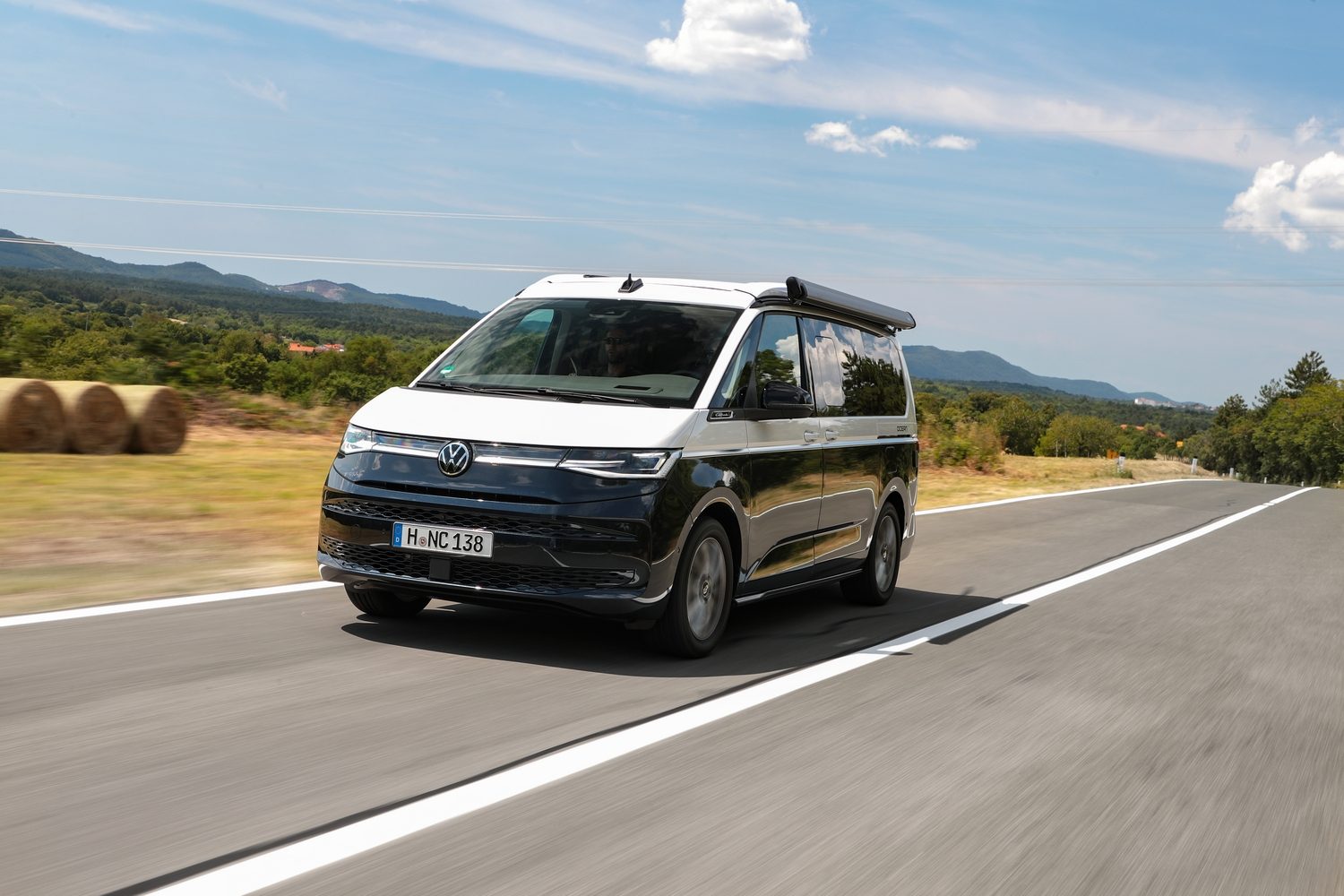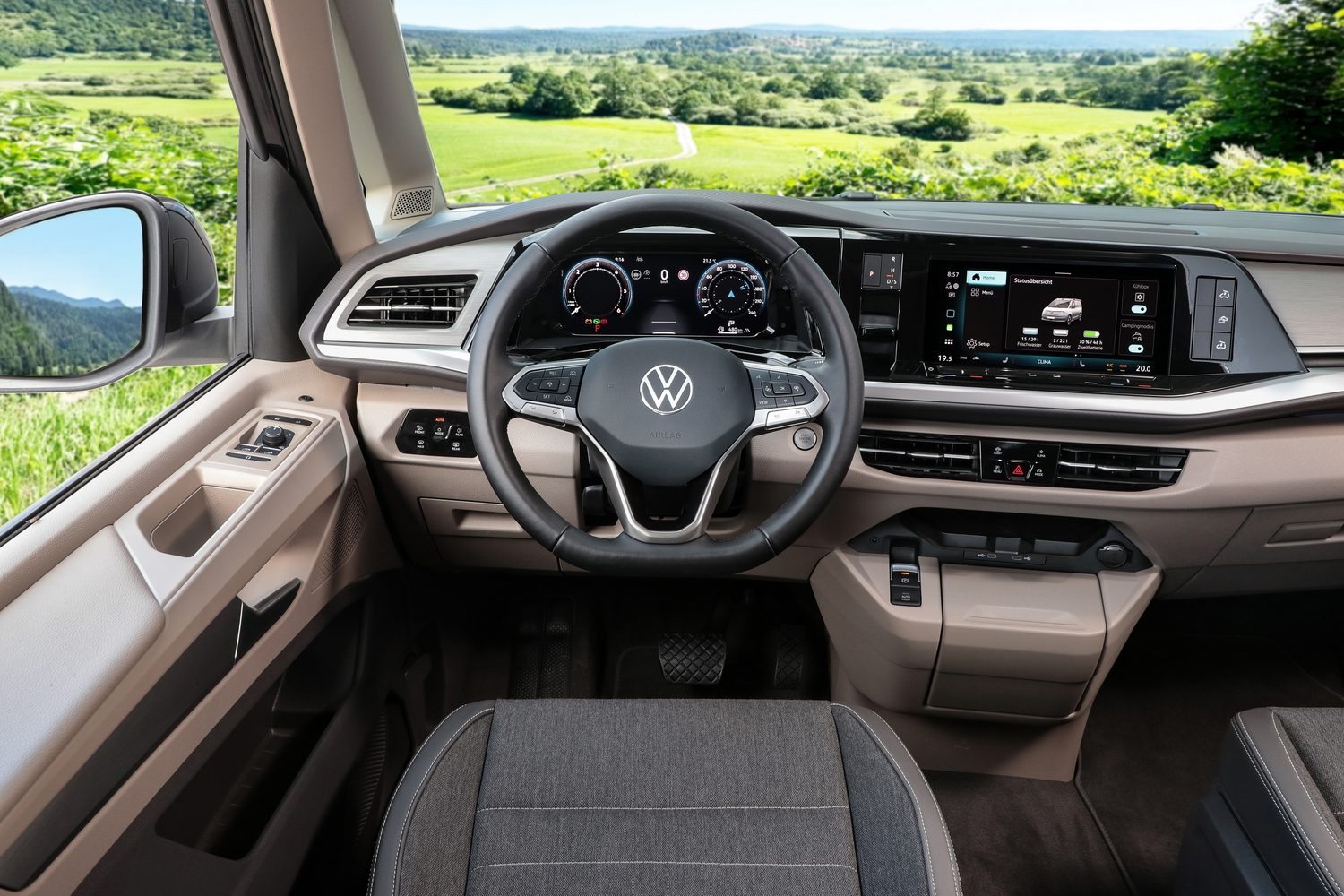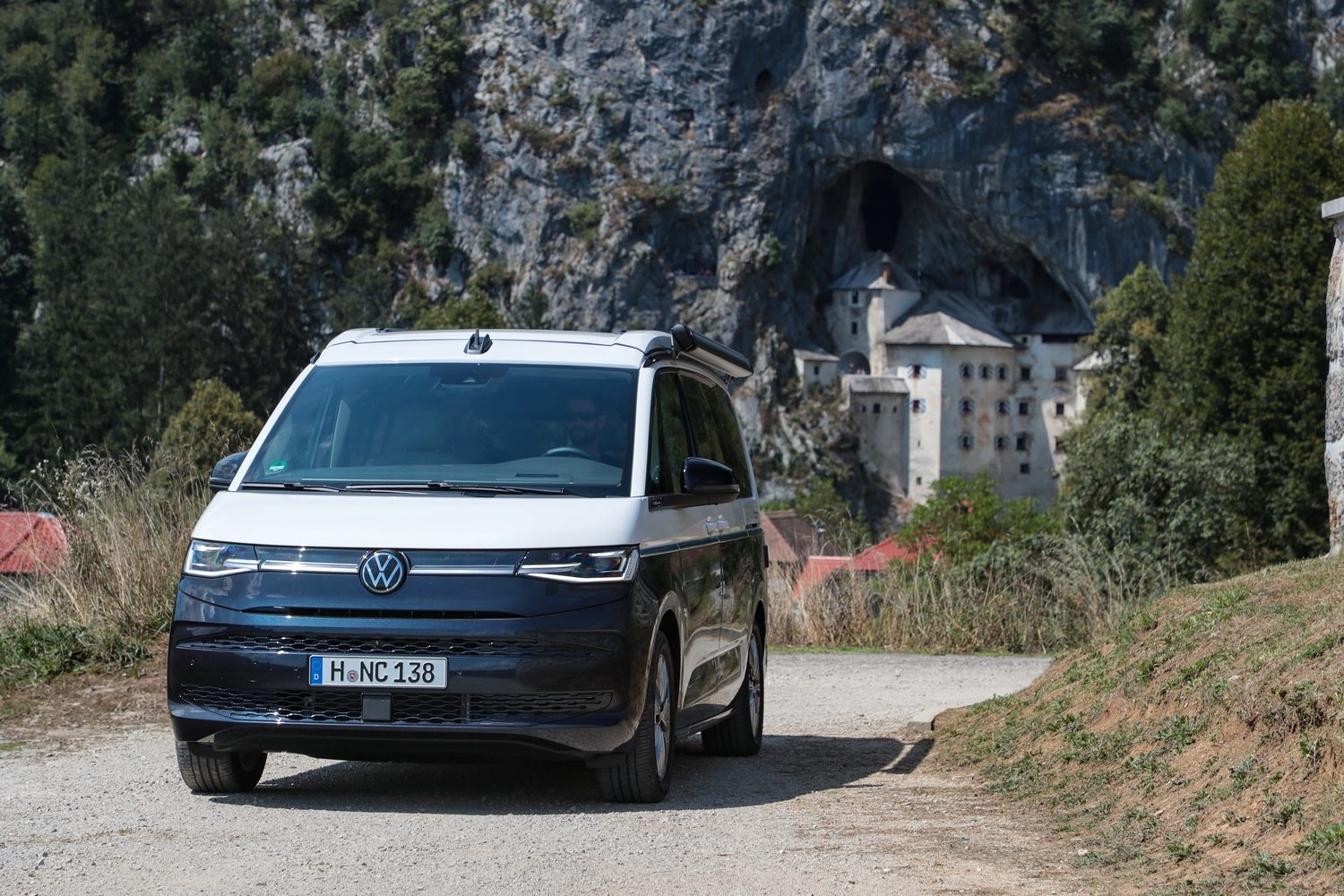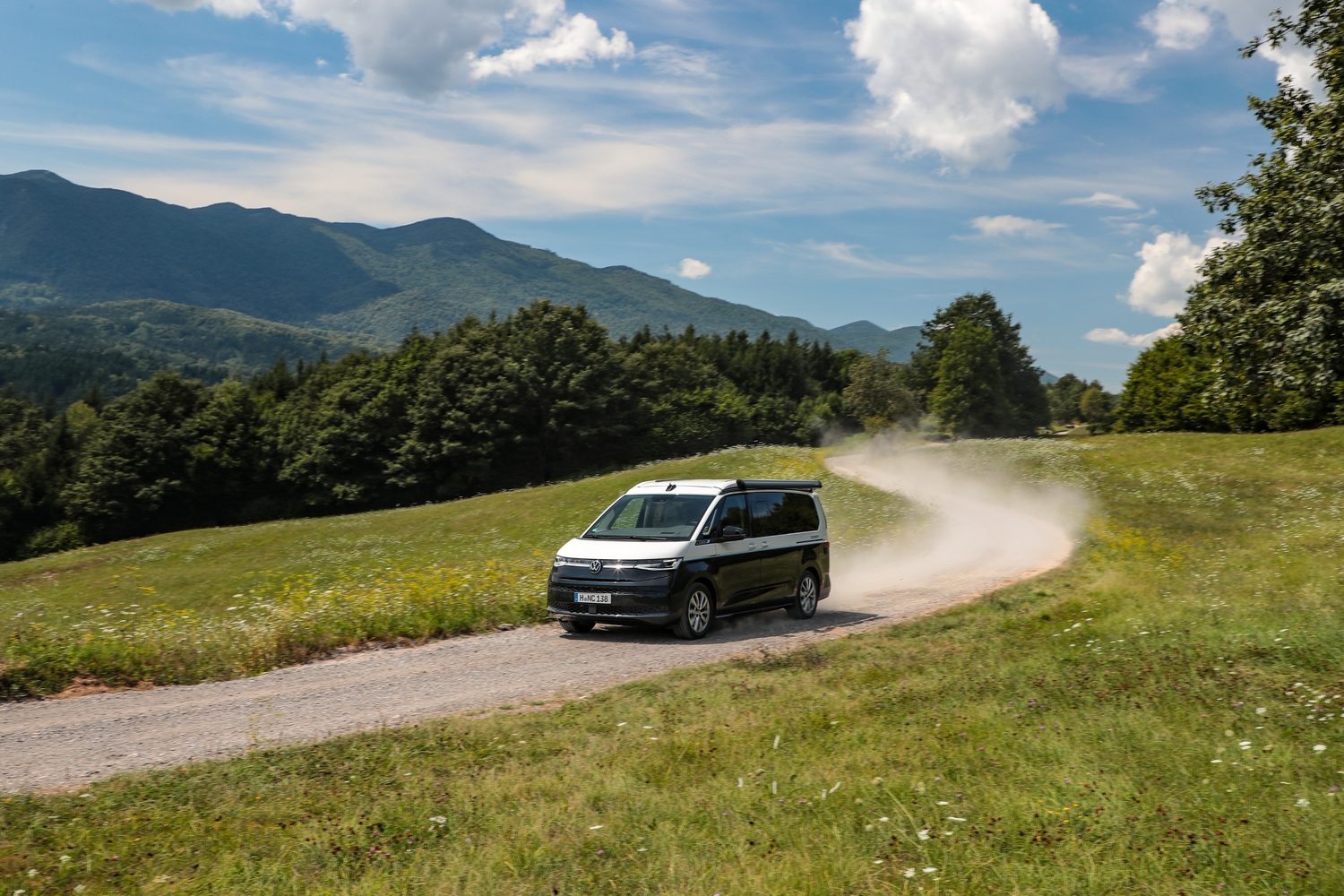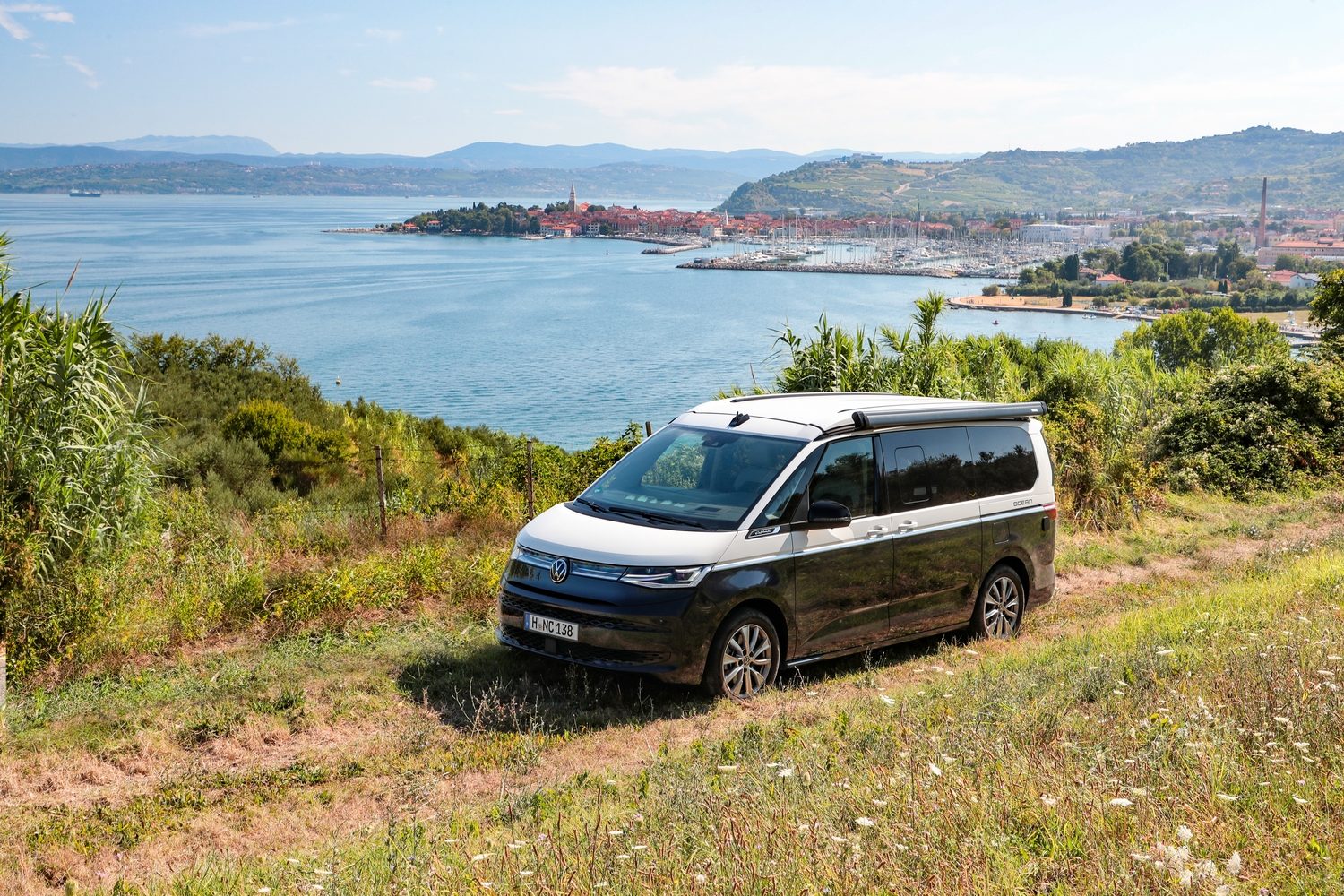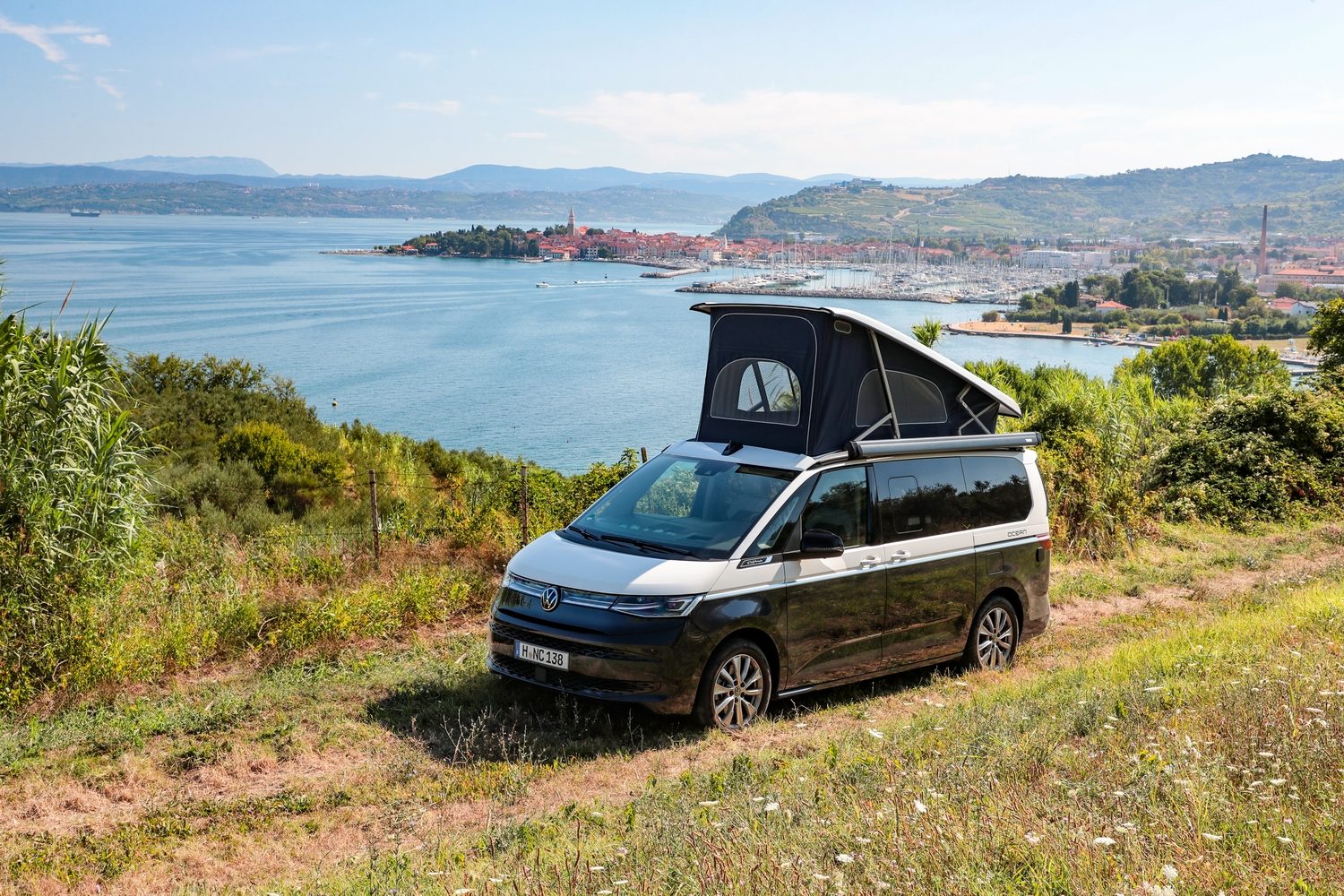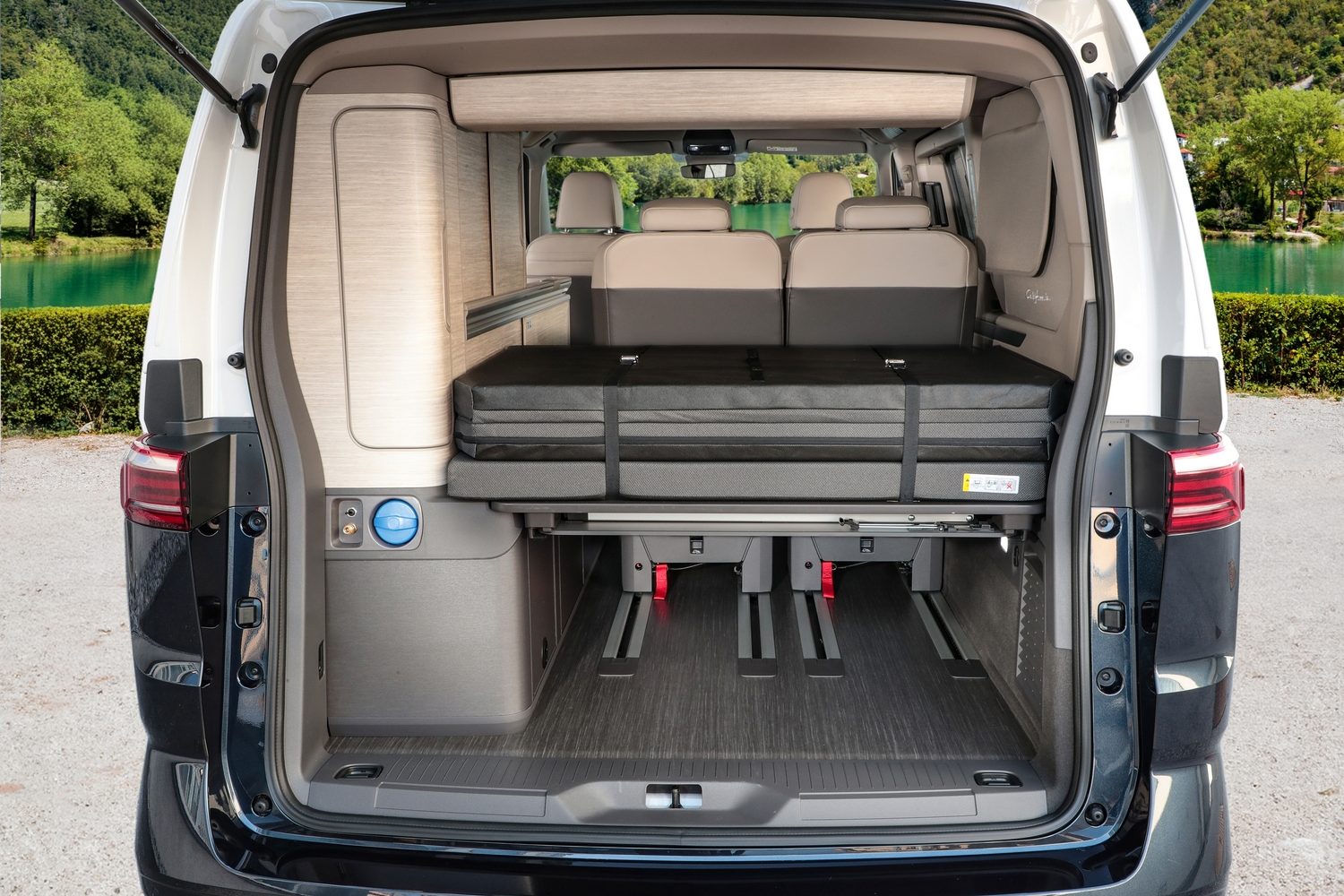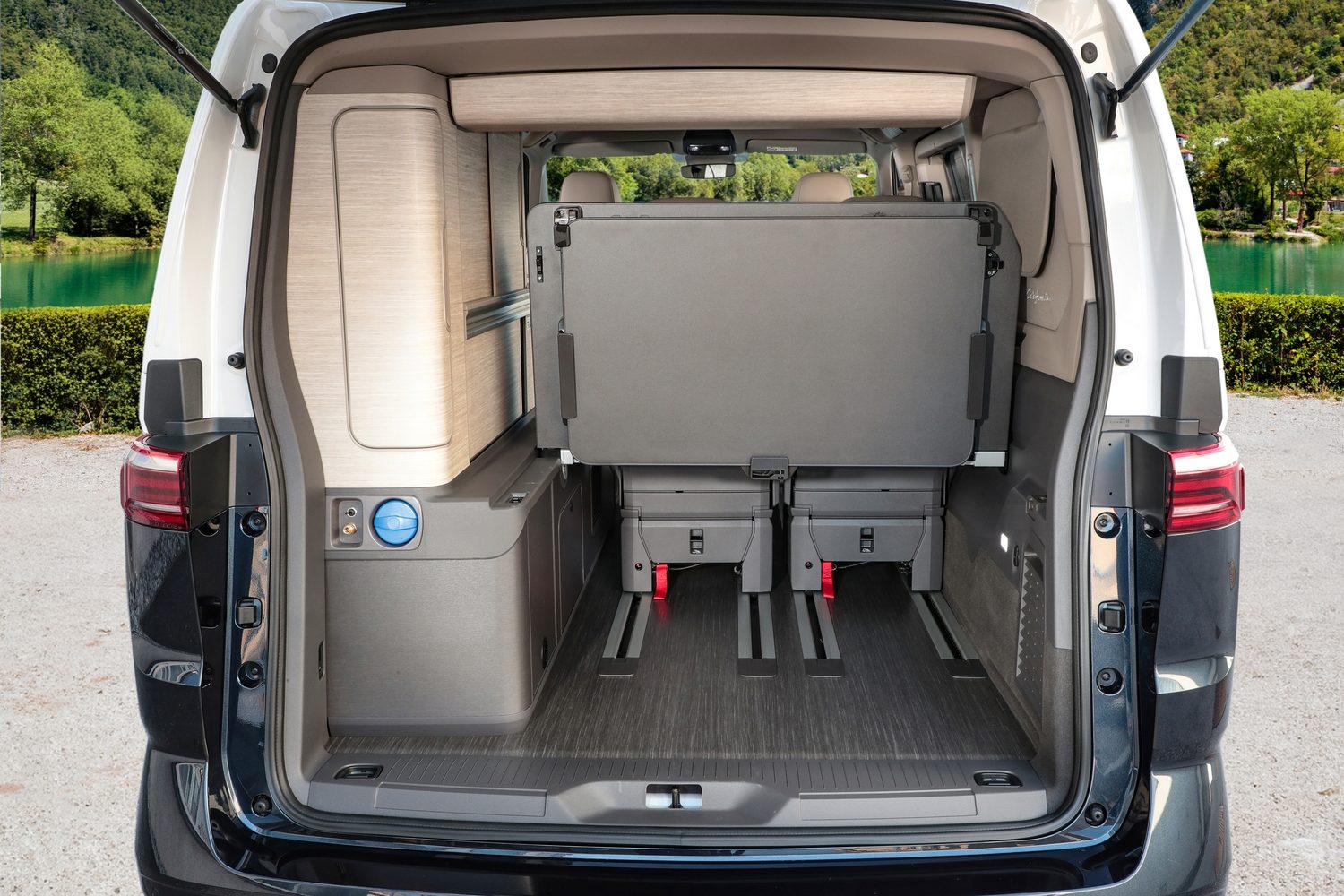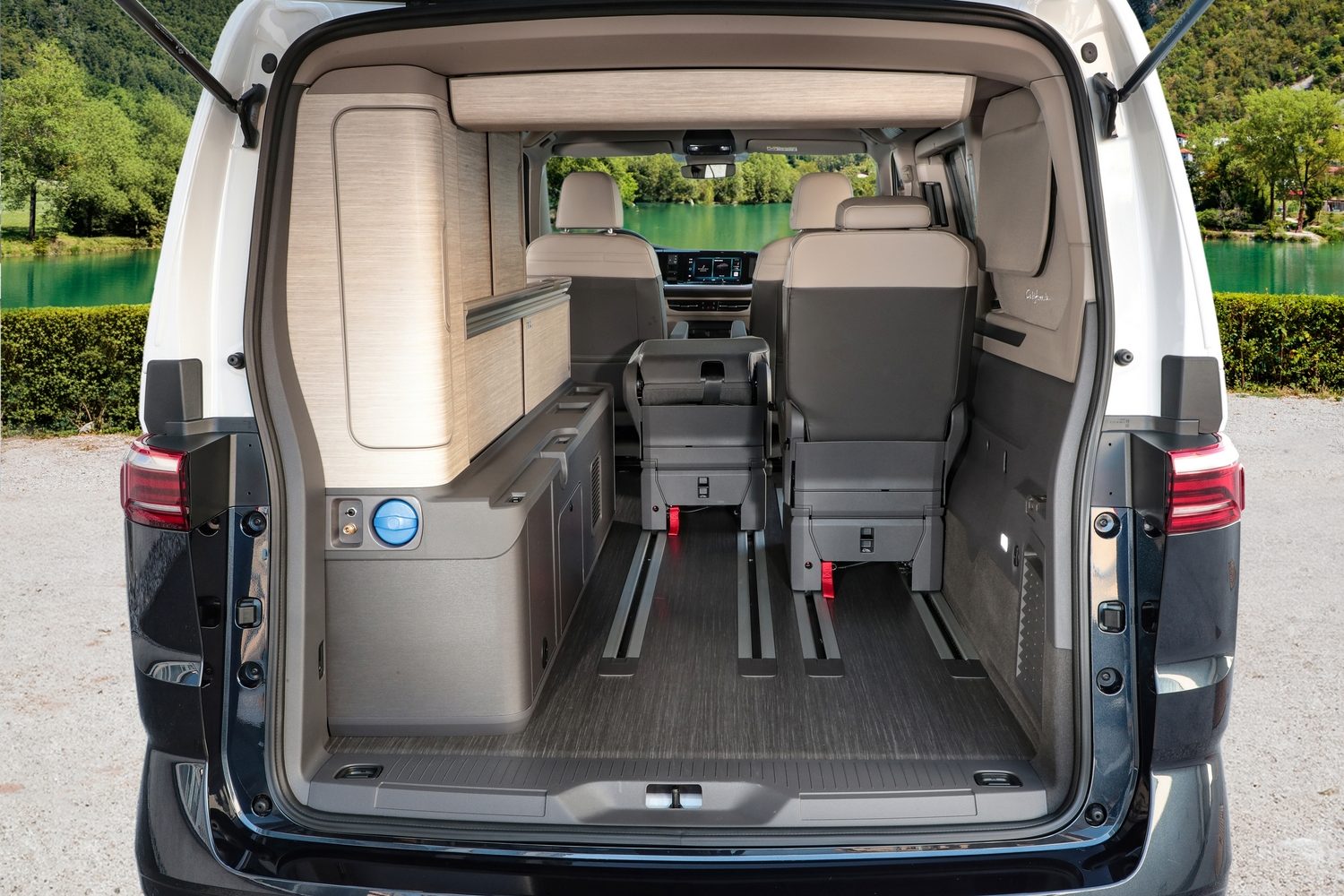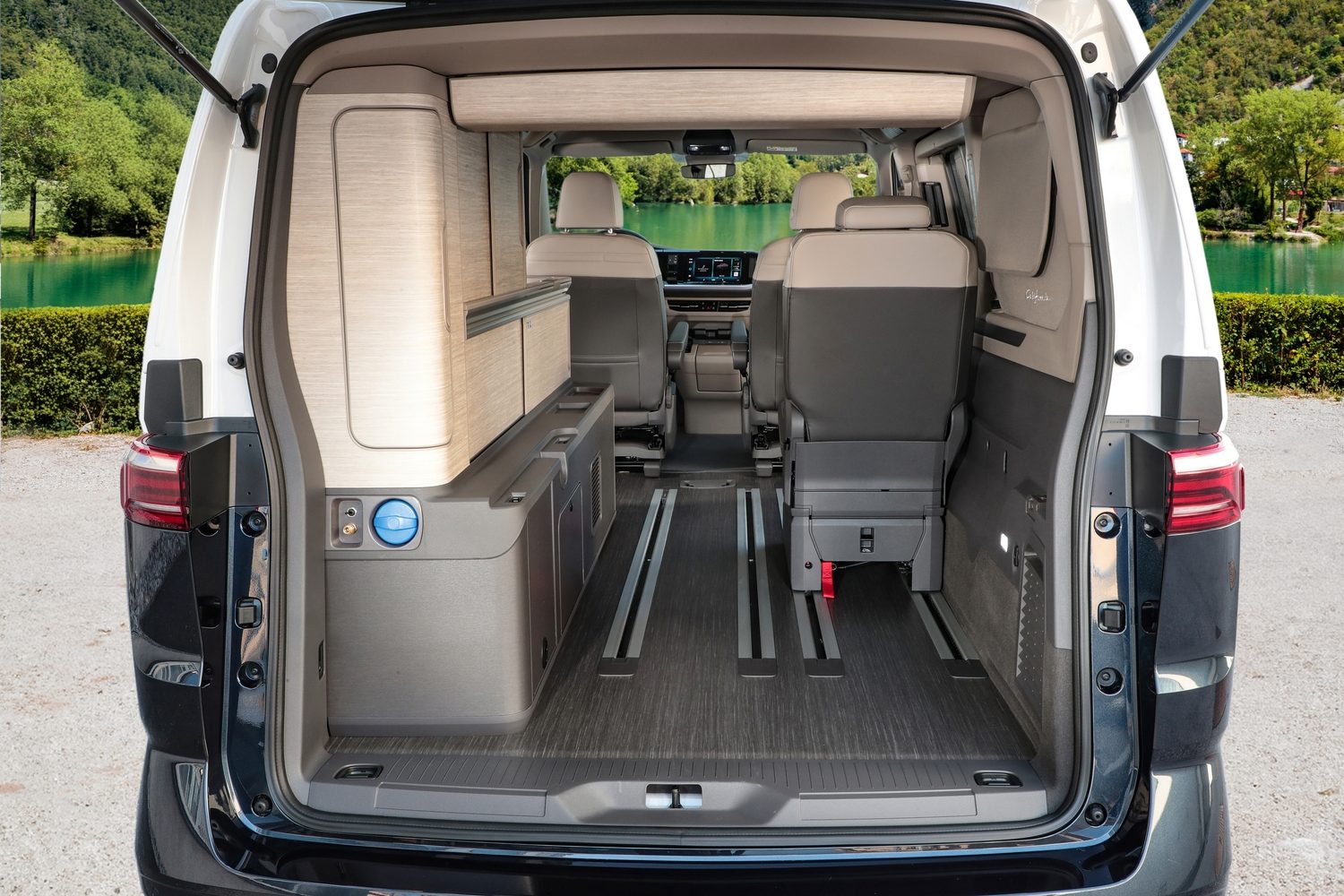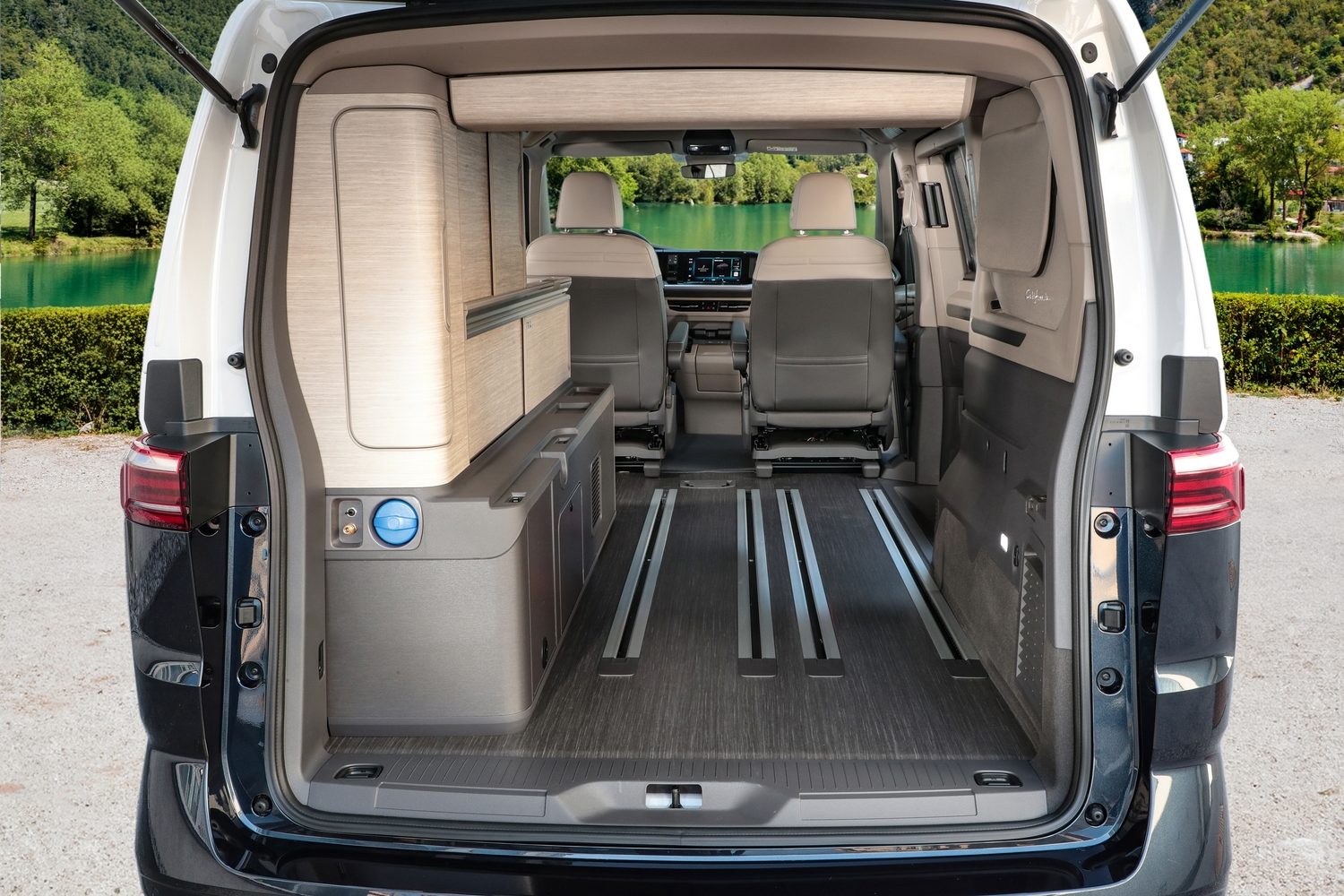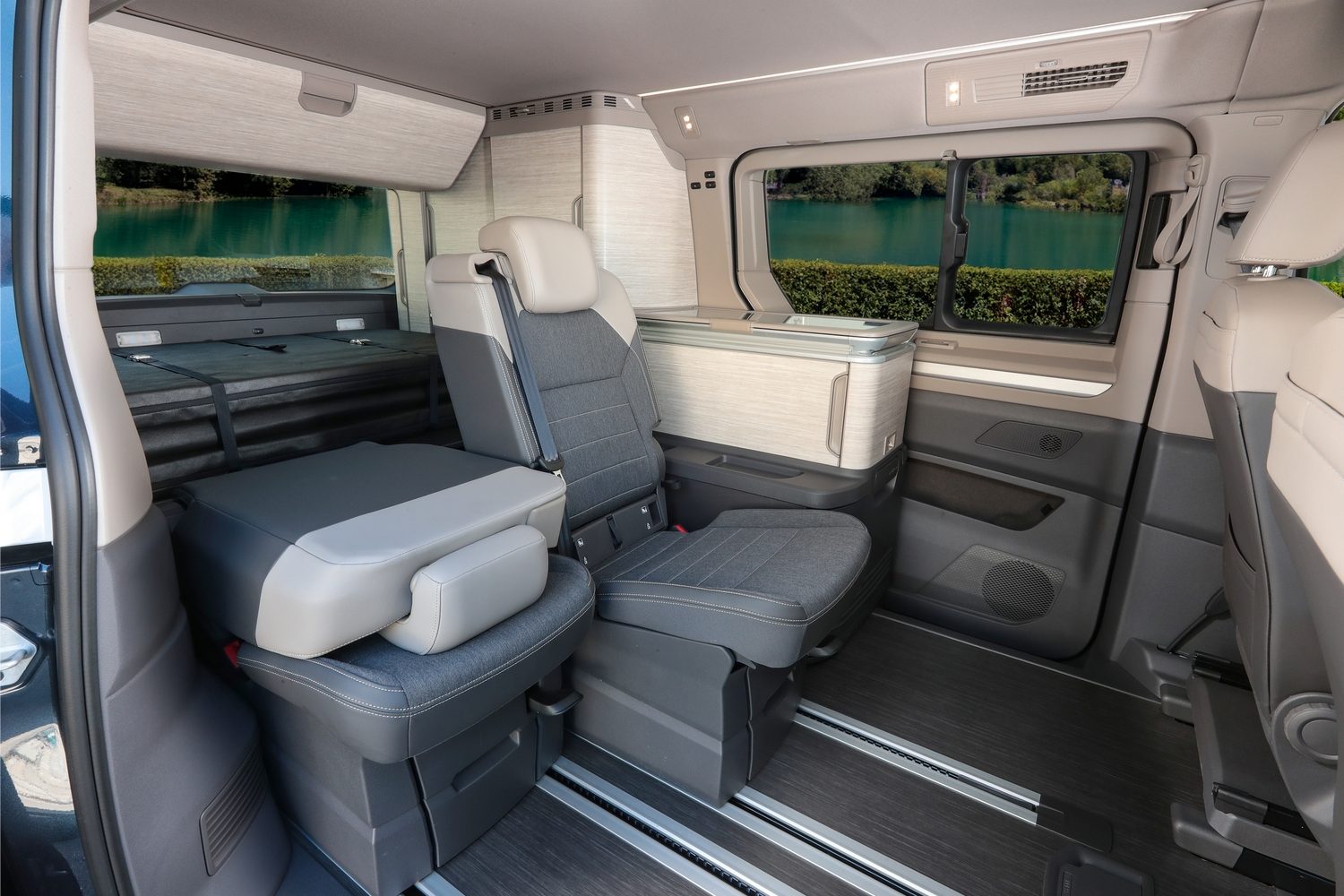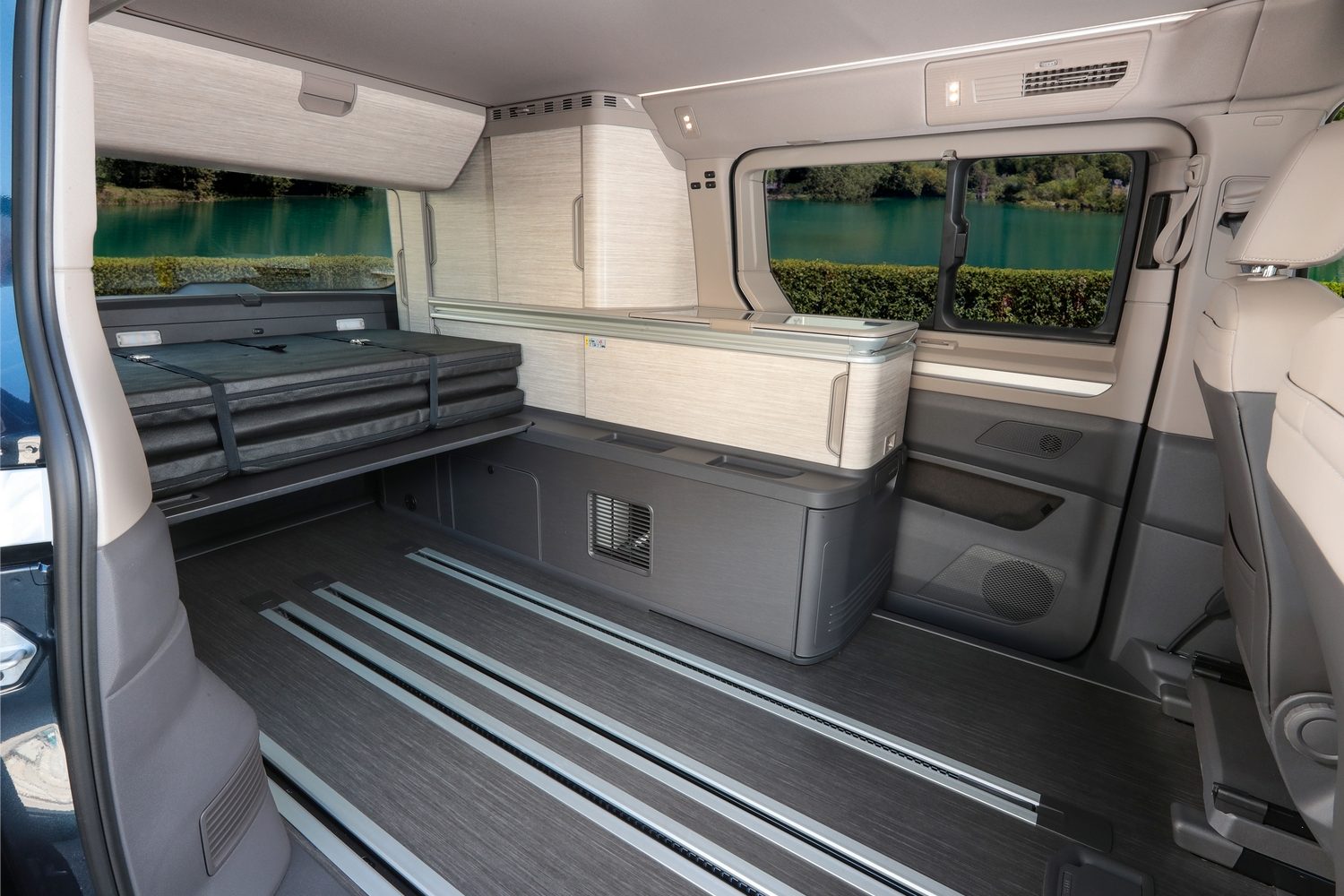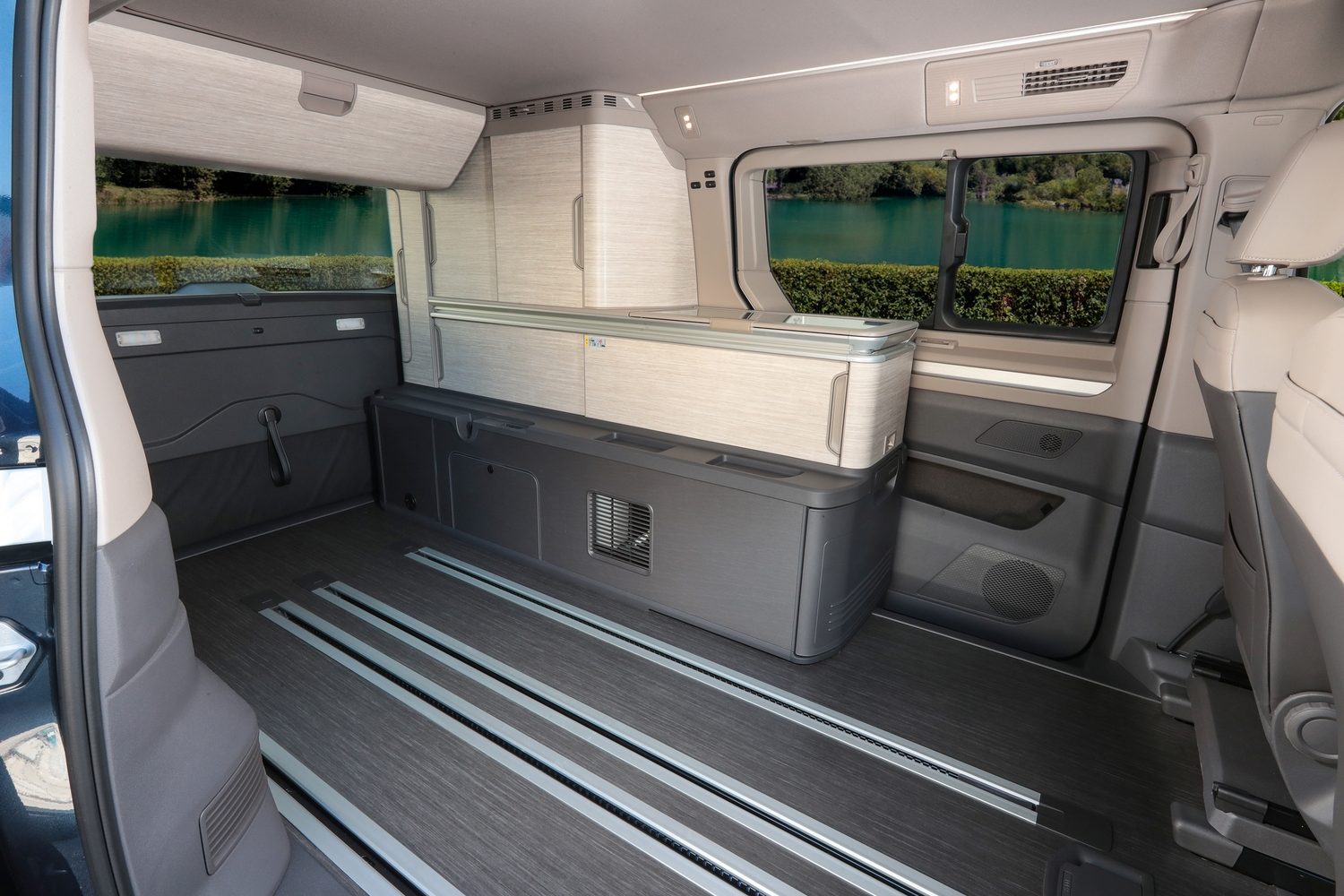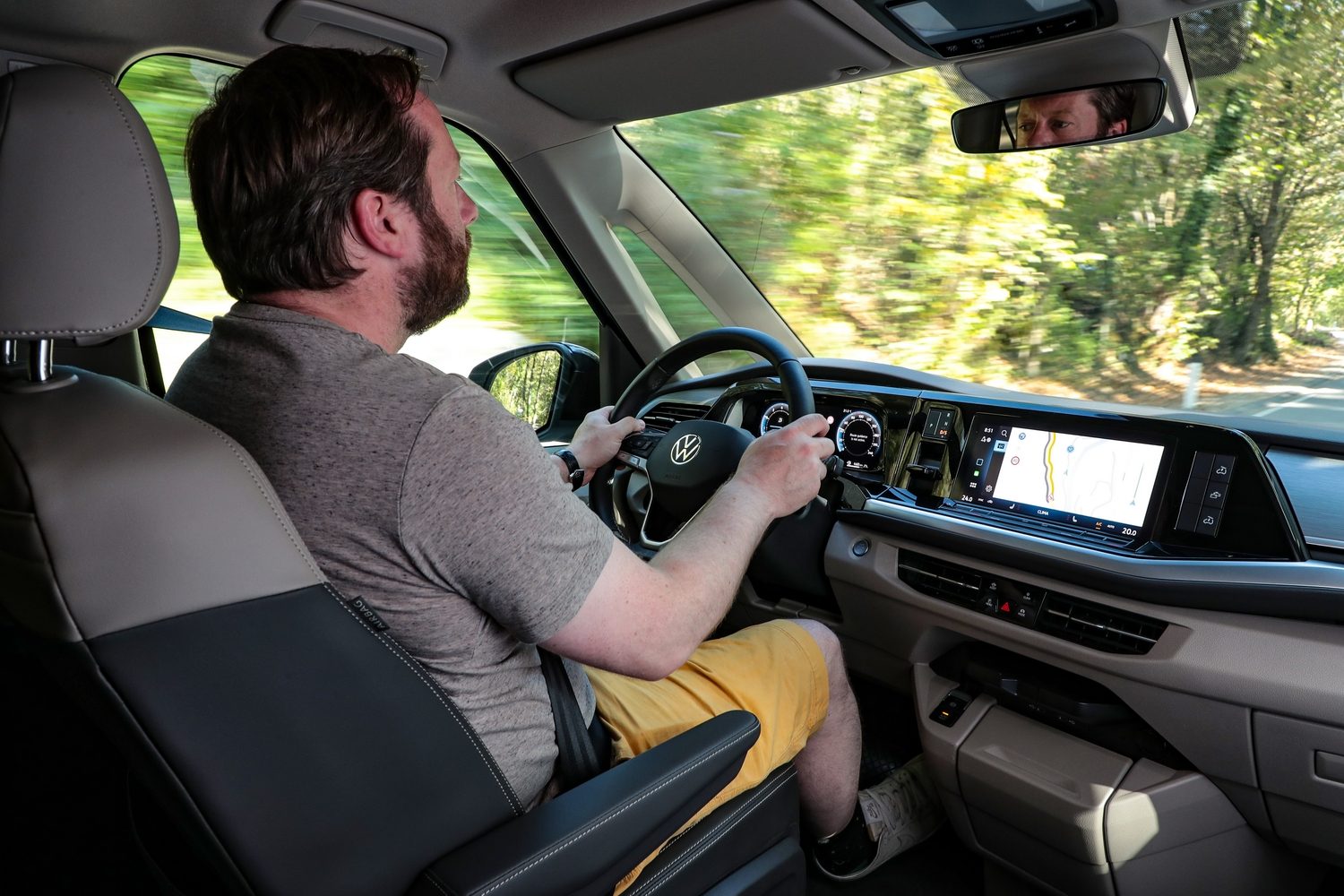The latest generation Volkswagen California is designed to be the most functional and versatile yet. It’s built using the Volkswagen Multivan as its basis and, for the first time, will be available with a plug-in hybrid powertrain. Ahead of that, we’ve spent several days with the diesel-powered California through Slovenia, Italy and Croatia to see what it’s like to drive and what it’s like to work from and sleep in.
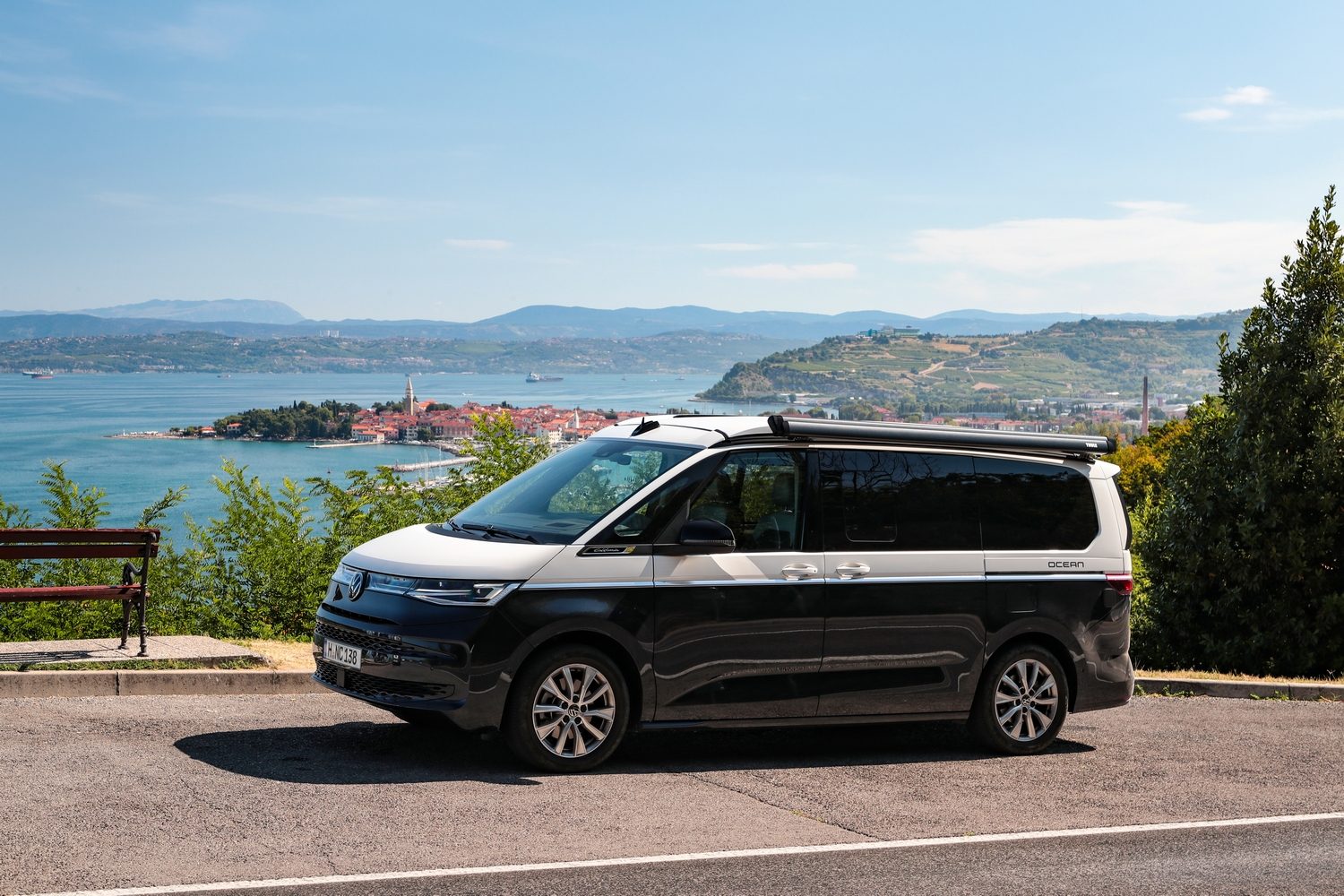
How big is the Volkswagen California?
The Volkswagen California is 5,173mm long and 1,941mm wide (excluding the door mirrors), which makes it longer and wider than the California ‘6.1’ at 4,904mm long and 1,904mm wide, respectively. The new vehicle’s wheelbase measures 3,124mm, which again is longer than the California 6.1’s. The overall height of the Multivan-based California is 1,990mm when the pop-up roof is lowered, giving it the same height as the model it replaces.
Those dimensions are part of what makes the California so appealing, as it can fit into most typical car park entrances and parking spaces. The interior height when the roof is closed is 1,297mm, increasing to 2,108mm when the roof is open and the upper bed’s base is lifted.
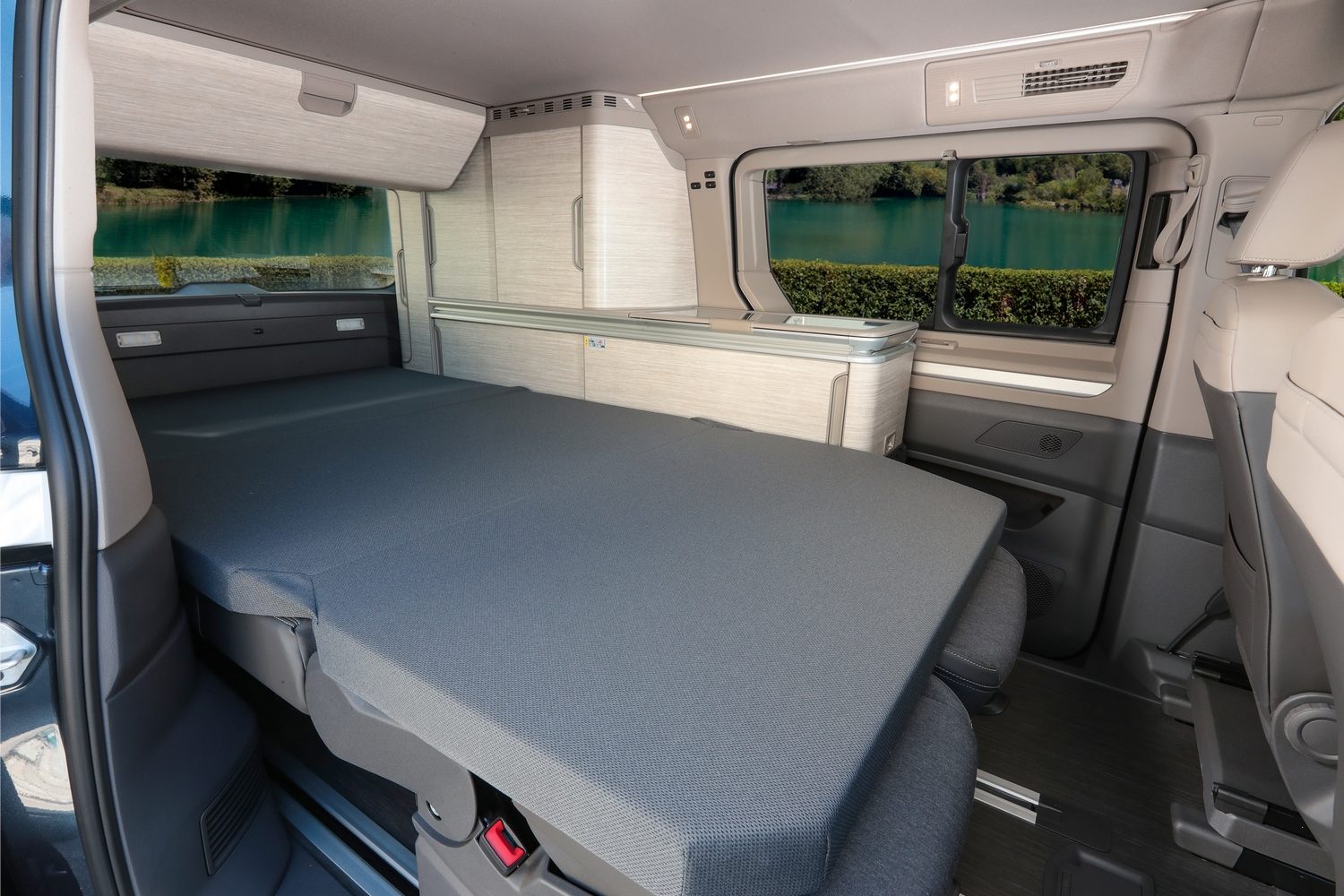
What is the Volkswagen California like inside?
Starting with the front seats, the Volkswagen California has a modern design thanks to its Multivan DNA. The driver gets a digital instrument display that can be configured with different views and is accompanied by a touchscreen infotainment system. Nestled between these displays is a small toggle switch for the automatic transmission. This California is auto-only, freeing up more space in the lower area of the dashboard and creating a flat floor, enabling both driver and front-seat passenger to walk through into the rear of the cabin.
For the first time in a Volkswagen California, the front seats are available with both height adjustment and a swivel function; previously if you had the swivel function you could not also adjust the seat height. Both front seats also feature adjustable armrests on each side. The front doors include two door bins and an upper and lower level, although the lower will be a stretch to reach for some when seated.
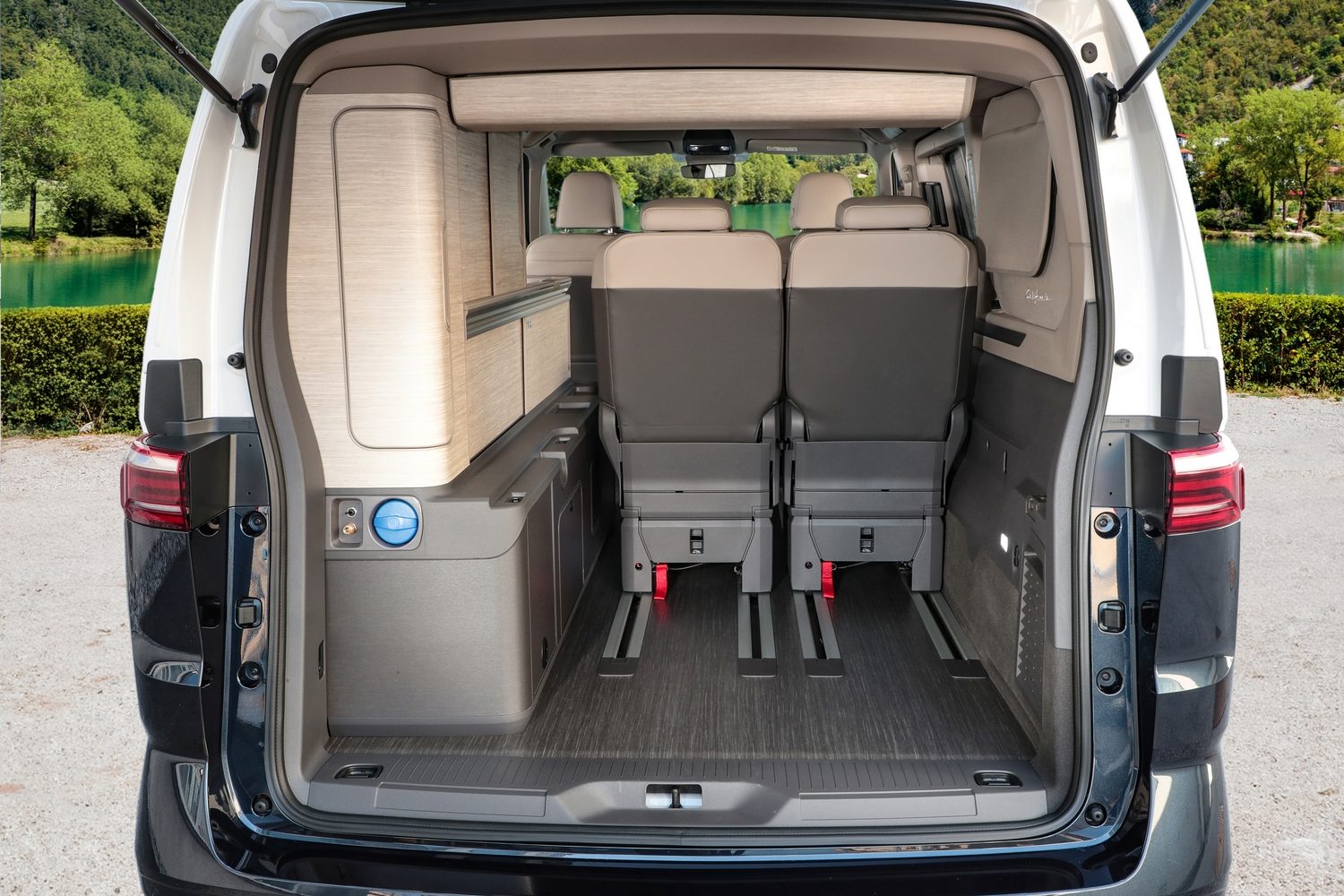
The California Ocean we’re driving here gets an exclusive ‘Mélange Raven’ seat fabric made from recycled material and features the California logo embroidered onto the front-seats backrests. Both front seats also include heating alongside ‘Climatronic’ automatic air conditioning and an auxiliary air heater.
Volkswagen has created a new and more compact kitchen layout for the rear of the California Coast and Ocean models. Designed with input from existing Volkswagen California owners, the new kitchen unit has only one gas hob for cooking but retains the wash basin and tap. This more compact design, and the Multivan underpinnings, allows for sliding doors on both sides, which opens up the cabin a lot more and is great news to those of us who live in right-hand-drive markets as it’s now possible to exit the back of the vehicle away from the road.
The freshwater tank is 5 litres larger than before, at 29 litres, and can now be filled from inside the rear, below the cupboard. Taking a leaf from sibling-company Skoda’s ‘Simply Clever’ playbook, Volkswagen includes an extendable plastic filler neck for the freshwater tank to make it easier to refill. Above the rear load compartment is a large stowage box mounted onto the roof, much like an overhead locker on an aeroplane.
When it comes to setting up camp for the night, the California app within the native infotainment system has a built-in vehicle level so that you can ensure it is parked on an even surface. Two digital scales indicate the California’s lateral and longitudinal angle, so it’s extremely easy to manoeuvre into a position where the van is level or on a slight slope to ensure the blood doesn’t rush to your head while you sleep and give you a nasty headache the following morning.
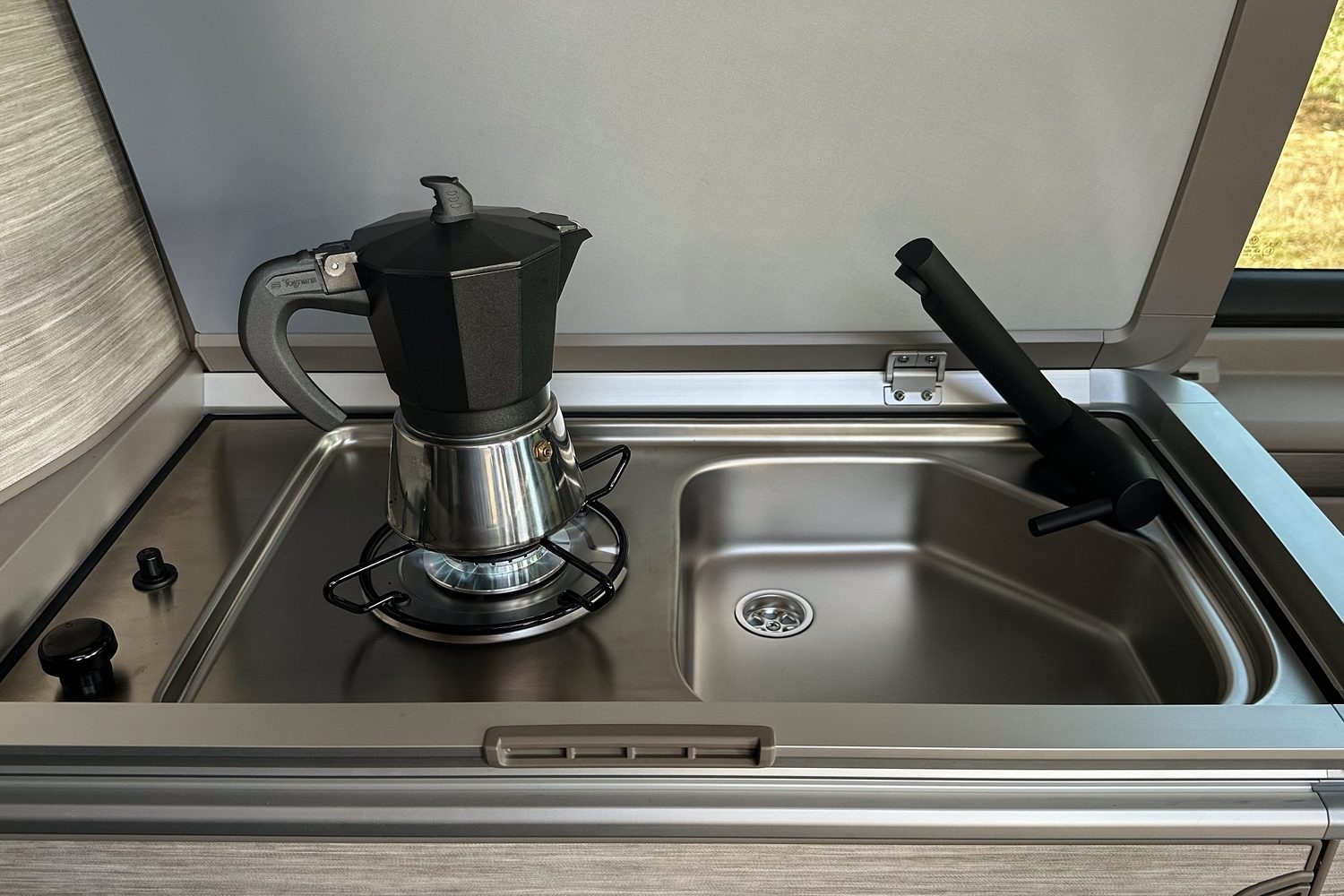
Operating the pop-up roof is quite simple, and it’s both quicker and quieter than the California 6.1’s. The upper bed’s base conveniently hinges upwards from the rear on gas struts when not in use, providing much more headroom to stand inside. As before, the roof section includes zipped covers that open to a mesh layer or can be fully opened. You also get a USB-C charge port and a 12-volt power socket up top.
The living area is also well-appointed, again with numerous power sockets and lightings. These can be controlled individually by tapping them or via the touchscreen display on the side pillar opposite the kitchen unit. From this screen everything relating to the camping experience can be controlled, including the fridge, additional ambient lighting and air conditioning.
Driving the Volkswagen California
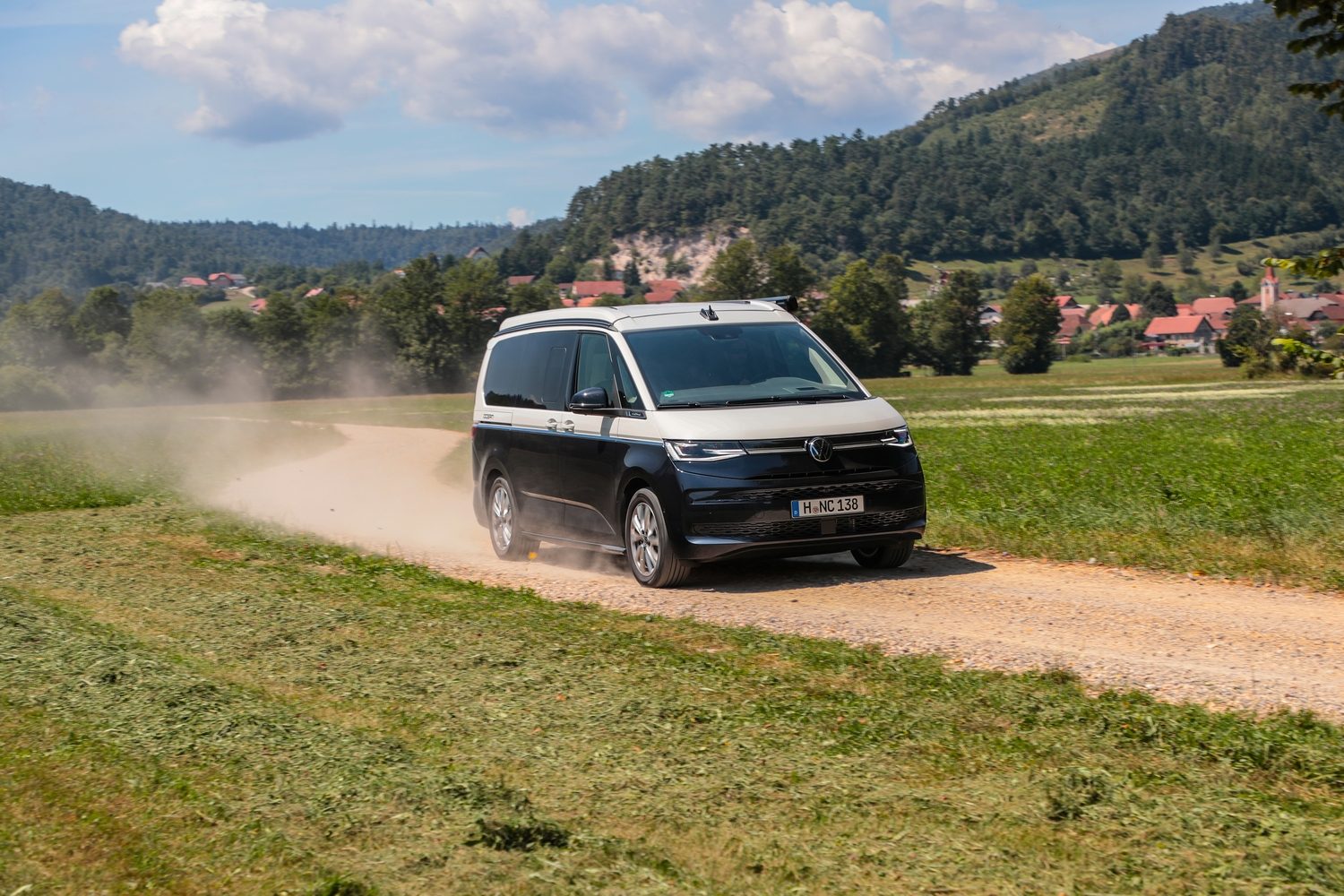
While campers are more about fulfilling the leisure aspect of their purpose, they shouldn’t be a burden to drive. One of the highlights of this latest Volkswagen California is that it is available with a plug-in hybrid powertrain, making it the first vehicle built on the Volkswagen Group’s MQB platform to combine a PHEV system with the 4Motion all-wheel-drive transmission. Its 1.5-litre TSI petrol engine is paired with an electric motor to produce up to 245hp, while a high-voltage battery enables limited electric driving. Being able to drive in and out of campsites without any noise or local emissions will surely be appreciated by everyone.
However, in this instance, we’re driving the diesel variant of the California, which uses a 2.0-litre turbocharged four-cylinder engine paired with a seven-speed automatic transmission. Despite its modest 150hp output, the California’s engine has plenty of torque to pull it along. The automatic gearbox makes light work of driving in towns and cities, and heavy traffic, and it is quieter than the diesel in the California 6.1.
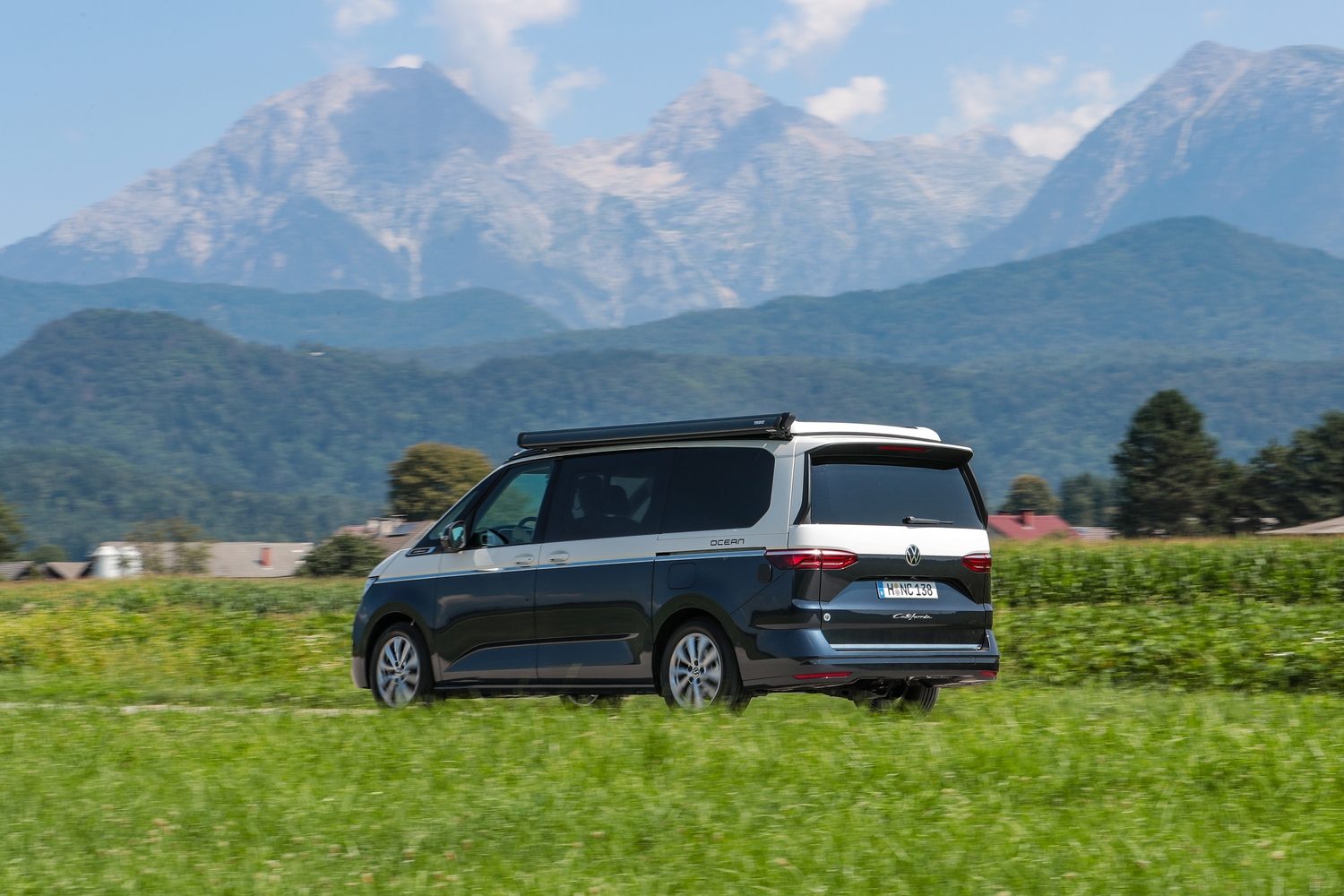
In addition to better sound insulation around the engine, the overall driving experience is also more refined than in the California 6.1, thanks primarily to the MQB platform it is built on. Not only is this vehicle quieter, but it is also much nicer to drive, with steering feel and body control that is more large-car-like than van-like, despite its size. Any drivers that are new to the camper experience will appreciate how easy the California is to drive, manoeuvre and park. Being able to access multi-storey car parks in the California easily is a massive plus in our book, as it lets you park up and explore more places, even in busy urban confines.
The driving position is pleasingly high, with an excellent view of the road aided by large front quarter windows doing an excellent job of reducing potential blind spots. Volkswagen equips the California with numerous driver assistance systems, and for the most part they work well. One particularly long motorway tailback was less of a burden thanks to the optional Travel Assist system that combines adaptive cruise control with side assist and stop-start traffic. The car would automatically creep along with the traffic and come to a stop when necessary, requiring us only to monitor the system.
What’s it like to sleep and work in the Volkswagen California?
There is the choice of sleeping in the main living area or ‘upstairs’ as we did during the trip. The lower section requires more effort to set up from its regular arrangement where the rear passenger seats are in use. Both can be folded flat and slide along the rails set into the floor - which is also great for creating more luggage space behind them if required. Behind these seats is a hard shelf containing the mattress that folds in three to save space. Once the rear seats are folded, this mattress can unfurl, and you can then add your own bedding to make it more homely. The mattress isn’t very thick but comfortable enough to spend the night on.
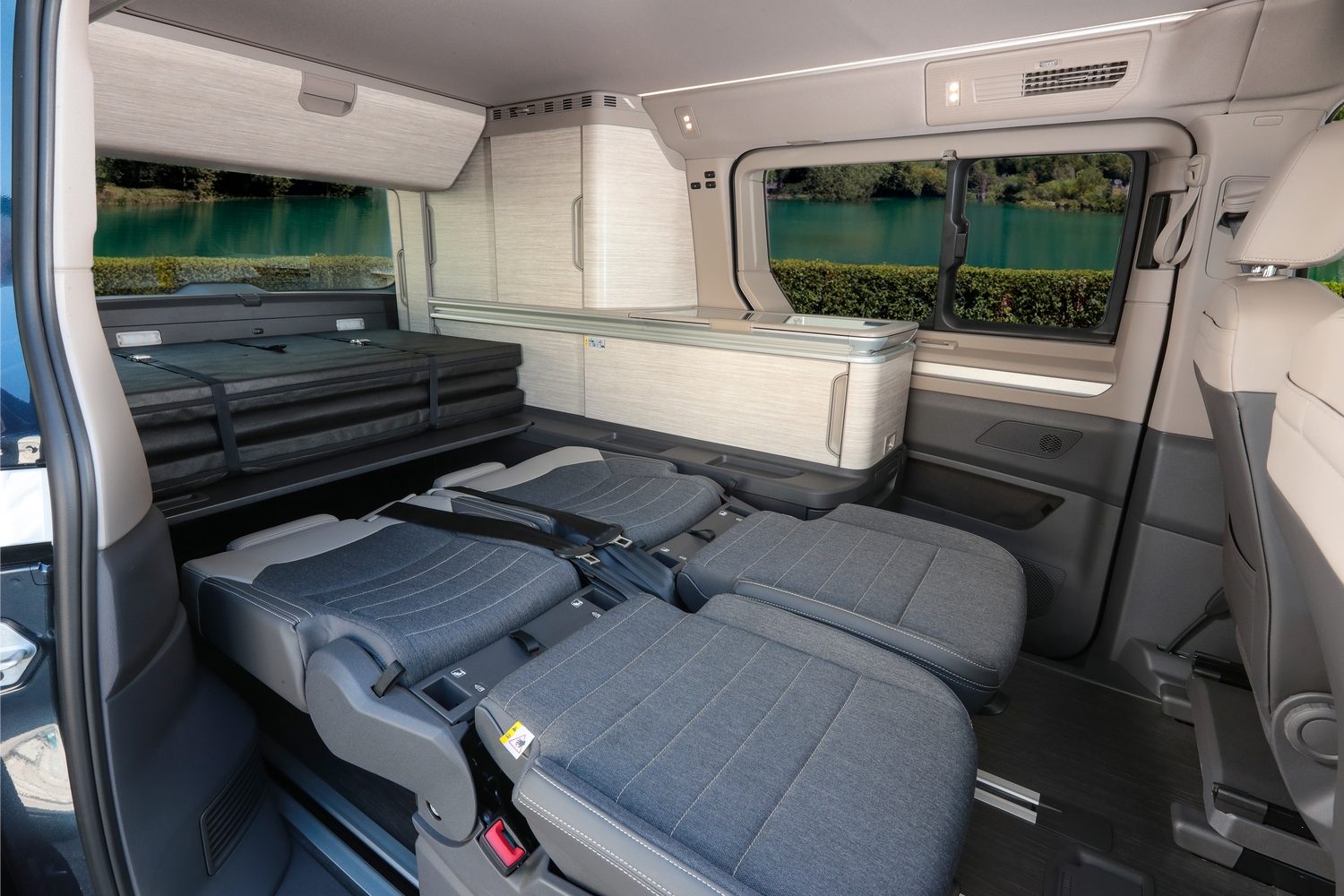
We opted to sleep in the upper section, as it’s much quicker to arrange and provides the additional benefit of being able to open the front and sides for a sunrise view. It uses the same type of mattress foam as below and sits on a flexible array of light plastic supports. Again, using your own bedding and pillows is recommended as it adds more comfort, though it’s also worth noting that in cool climes, the warm air from the cabin below will rise, and the roof section tends to do a reasonable job of retaining heat. It was the opposite in our instance, as the hot summer weather meant we kept the front and side sections open (but with the mesh still zipped up) to allow some airflow through the upper section.
The mattress is reasonably comfortable, but adding another layer on top would make it much more pleasant to sleep on. It’s wide enough to fit two adults side by side, and it is best to sleep with your head towards the front of the California, as the roof angle might make the rear claustrophobic for some. Getting in and out of the upper section also requires a bit of gymnastics as the open section to access it is above the front seats. Some may find it too much effort, but kids will surely love it.
When it comes to doing some work in the Volkswagen California, there’s plenty of options. The kitchenette has a useful table that can attach to any of its three sides, and when on the inner section it’s possible to position it with the rear seat to serve as a workstation. The table itself isn’t as large as the one in the California 6.1, but is sufficient for working from a laptop on, plus there are plugs next to it to stay powered up. With camping mode activated the California switches to its leisure battery for internal power and this can provide as much as 40 hours of energy depending on use.
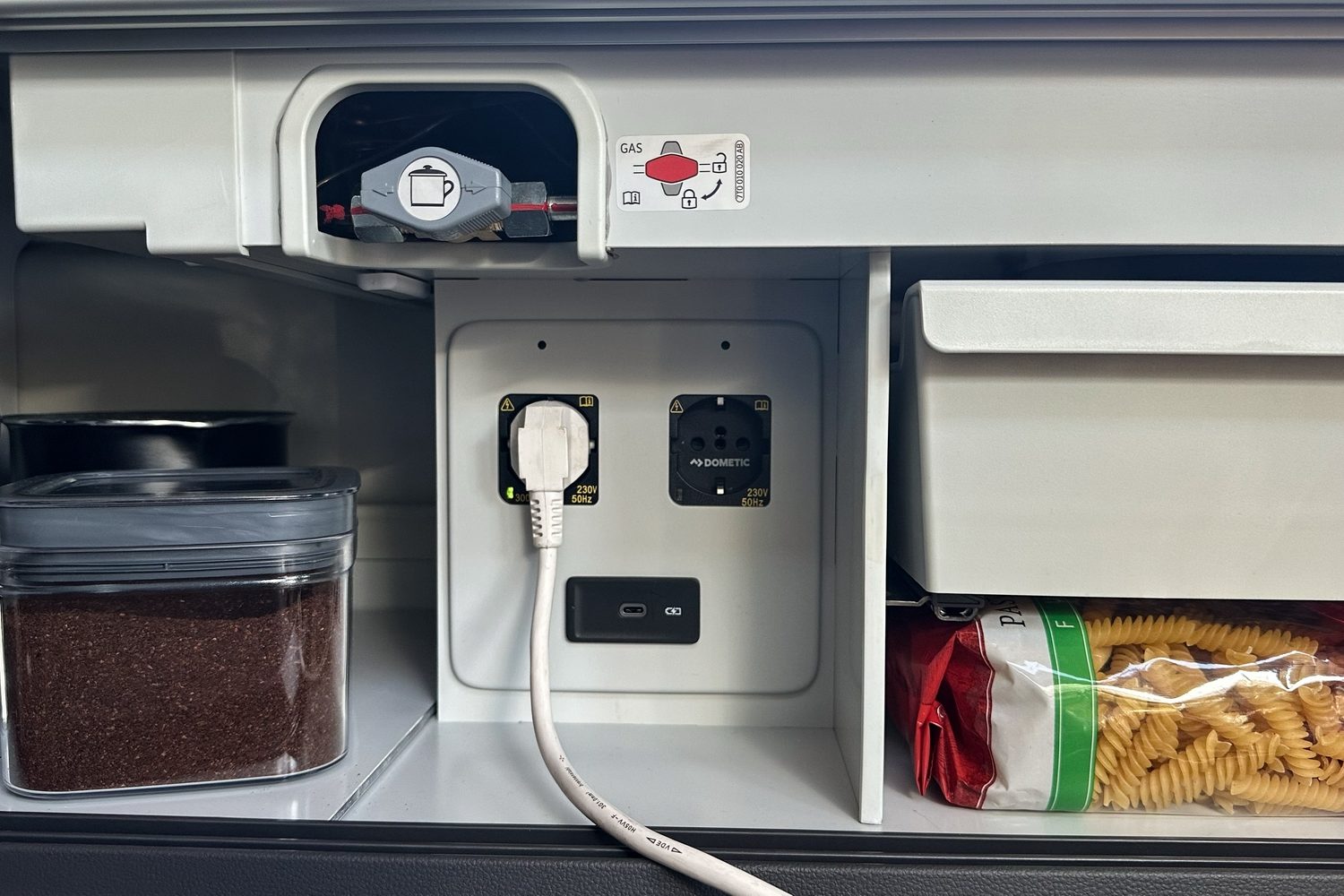
If it’s nicer outside you could take the foldable picnic table out from the rear (it slides out from the hard shelf that supports the mattress) and then remove one or two of the foldable picnic chairs that slot into the tailgate. The chairs have been redesigned and now have better back support than previous iterations. Extending the awning on the left side is also a quick and easy task but is best done with two people to make extending the support struts that
How economical is the Volkswagen California?
The diesel engine will be the most economical powertrain if you’re doing a lot of longer-distance touring, as it provides ample torque and performance without using excessive amounts of fuel. The official combined consumption figure is 6.6 litres/100km, though we saw a higher figure during our test. Admittedly, our trip included many very steep mountain climbs. As ever, fuel consumption will vary depending on how many people are in the California and individual driving style.
Volkswagen will soon add a plug-in hybrid option, though this will only have a relatively short electric-only driving range before the petrol engine kicks in. If you prefer shorter trips, this could be a suitable option, especially if you’re able to plug in frequently and maximise the hybrid battery. However, if you’re travelling to more remote places, doing so might not always be so easy.
One of the other upsides of a vehicle such as the Volkswagen California is that campers have a specific motor tax rate that costs just €102 per annum, making them more affordable than commercial vans and private passenger cars to tax.
How many child seats can I fit in the Volkswagen California?
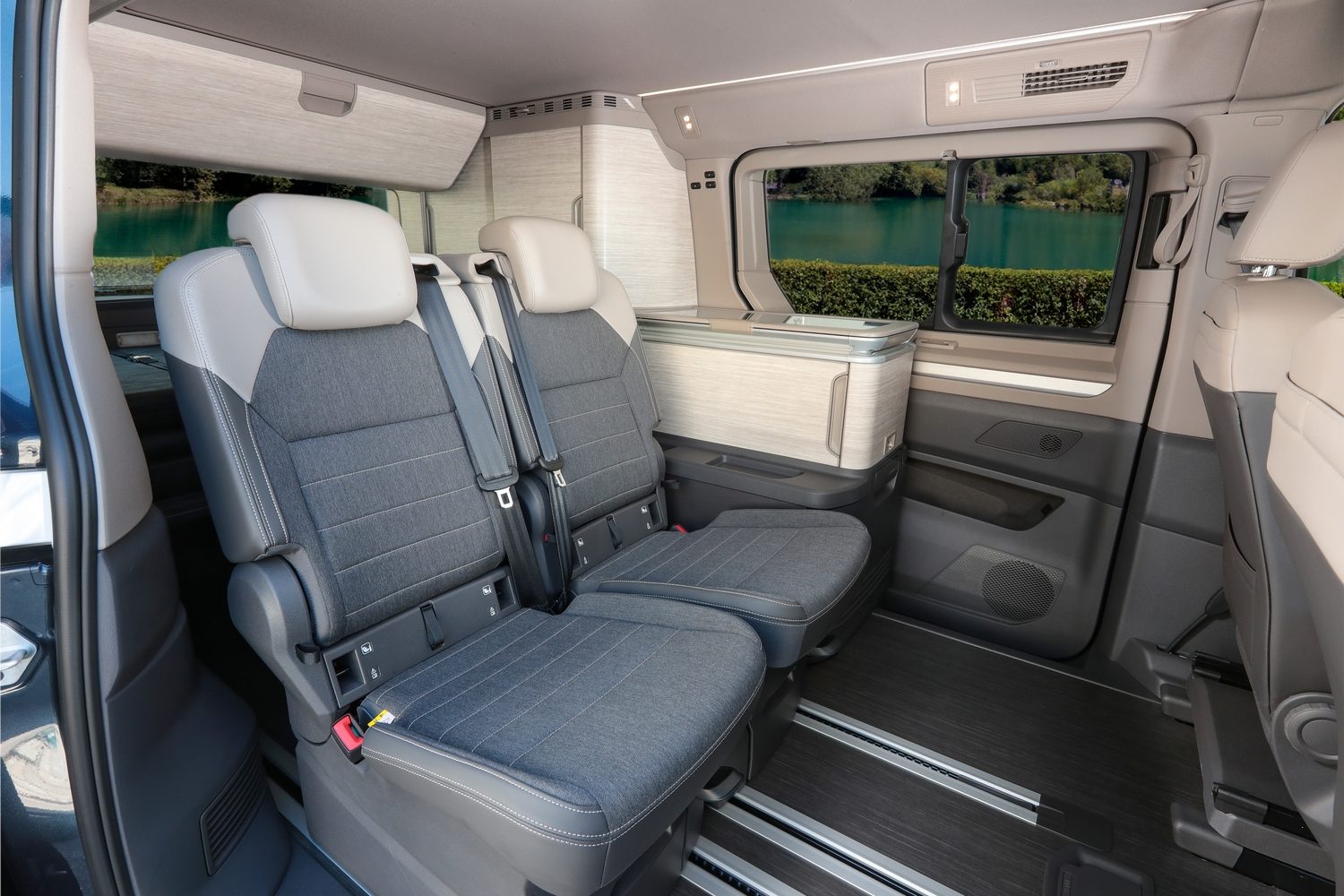
Both of the Volkswagen California’s rear seats contain ISOFIX mountings and as they are individual seats and not a bench setup as in the previous California 6.1, it means that you could slide them to different stages to make it easier to accommodate two child seats at the same time.
If you opt for the California Beach, it is available with a six-seat setup thanks to two additional seats in the third row. These are the same individual seat design as the middle row and are also equipped with ISOFIX mounting points.
The reasons you’d buy a Volkswagen California
The Volkswagen California is one of only a few factory-designed and built camper vans, bringing many positives. For starters, everything is designed to fit perfectly into the rear, and it all comes effectively from the one source. Aesthetically, it looks good, and in our experience, it’s all very well assembled. Volkswagen highlights that every component in the California can be ordered through a Volkswagen dealer, which can be useful if you’re abroad and need something repaired.
There are more practical reasons, too, such as California’s size, which means it can fit into most multi-storey car parks and other limited access sites that larger campers cannot, such as a national park or beach. Its ease to drive and reasonable manoeuvrability are also plusses, making it far more usable on a day-top-day basis unlike some larger campers that are often only used when going on trips. There’s no reason why owners couldn’t drive the California on a daily basis.
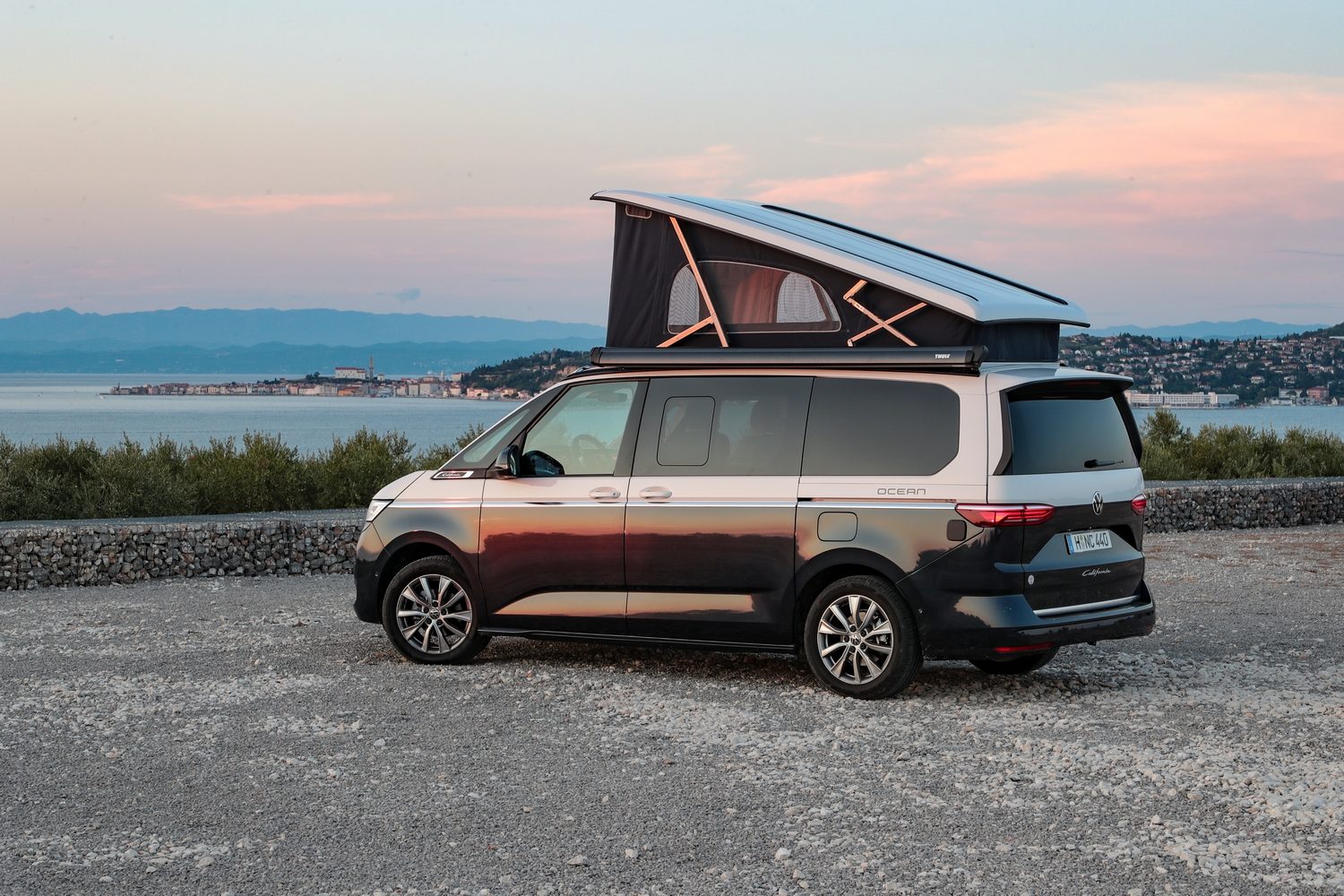
Ask us anything about the Volkswagen California
If there’s anything about the Volkswagen California we’ve not covered, or you’d like advice in choosing between it and other vehicles, you can avail of our (completely free) expert advice service via the Ask Us Anything page.

